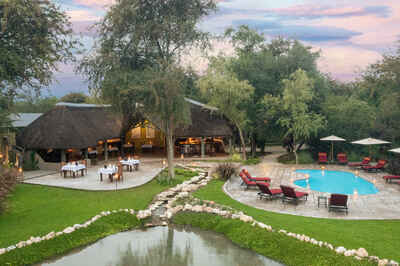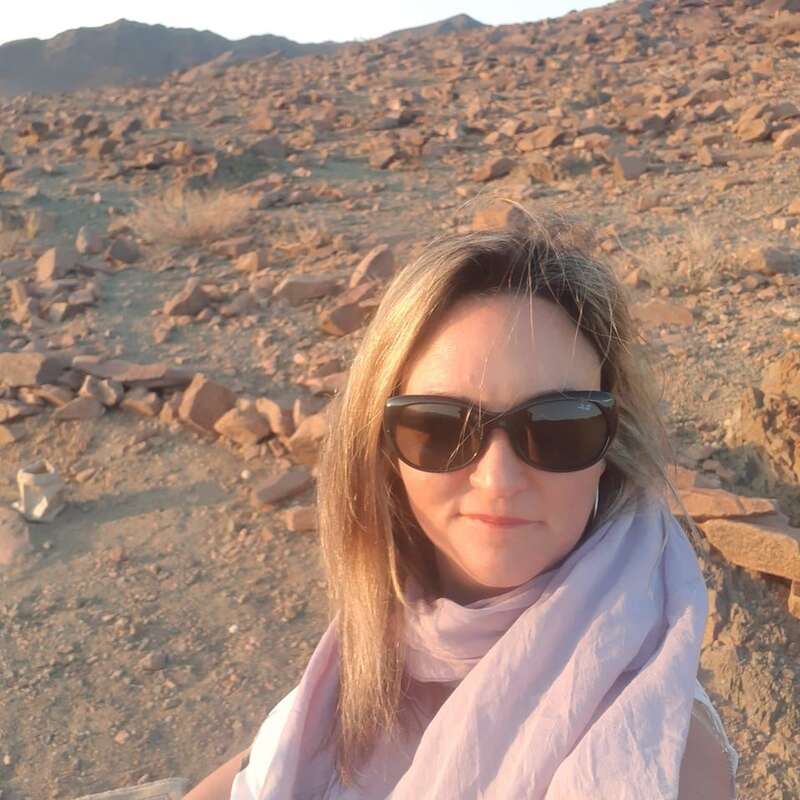About Onguma Forest Camp
One of the oldest places to stay around Etosha, the unfenced Etosha Forest Camp retains a solid, almost homely feel.
Homely, that is, with a twist, for this camp comes with air-conditioned rooms that range up to the smart Explorer Bungalows, a swimming pool and even a wine cellar. It’s the sort of place where you could spend a few days in comfortable surroundings without feeling rushed.
As if to reinforce the point, there’s a birdbath outside each of its thatched chalets, with a couple of chairs where you could happily while away time just watching the avian visitors that drop by. With some 300 species identified on the reserve, it’s worth keeping the binoculars to hand.
For larger animals, a saunter over to the terrace in front of the open-sided restaurant reveals a small waterhole that – in the drier months – attracts antelope and other plains game. But for a real chance to spot wildlife, there’s no substitute for Etosha itself.
Having been brought into the Onguma fold in 2009, the camp shares the main gate into the Onguma Reserve, bringing the national park within just 15 minutes. Drive yourself, or take a guided trip, but don’t miss it.
Our view
Onguma Forest Camp offers comfortable, affordable accommodation in an unfenced environment and has a great bush feel to it. We like the rustic feel of the camp and lack of pretension, and it can be a good base to spend a couple of nights in order to explore Etosha National Park.
Accommodation
11 bungalows
Children
Best for 10+
Open
All year
Activities

4WD Safari

Birdwatching

Guided walking safari

Private activities
Traveller reviews of Onguma Forest Camp
38 real, un-edited reviews from Expert Africa's travellers.
Arrived 28 Mar 2025, 2 nights
"Onguma Forest Camp review"
Overall rating: Good
Arrived 5 Jul 2024, 1 nights
"Onguma Forest Camp review"
Overall rating: Excellent
Arrived 30 May 2023, 2 nights
"Onguma Forest Camp review"
Overall rating: Average
Arrived 18 May 2023, 3 nights
"Onguma Forest Camp review"
Overall rating: Excellent
Arrived 21 Oct 2022, 2 nights
"Onguma Forest Camp review"
Overall rating: Average
Arrived 17 Mar 2022, 4 nights
"Onguma Etosha Aoba review"
Overall rating: Excellent
Arrived 21 Sep 2018, 1 nights
"Etosha Aoba comfort"
Overall rating: Excellent
Arrived 5 Sep 2018, 1 nights
"Onguma Etosha Aoba review"
Overall rating: Excellent
Arrived 6 Oct 2017, 2 nights
"Etosha Aoba and Walking Safari"
Overall rating: Excellent
Arrived 26 Apr 2017, 2 nights
"Very good and comfortable"
Overall rating: Good
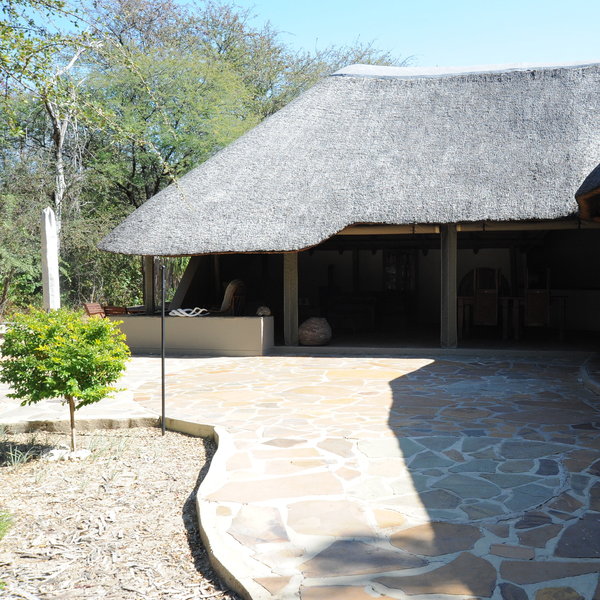
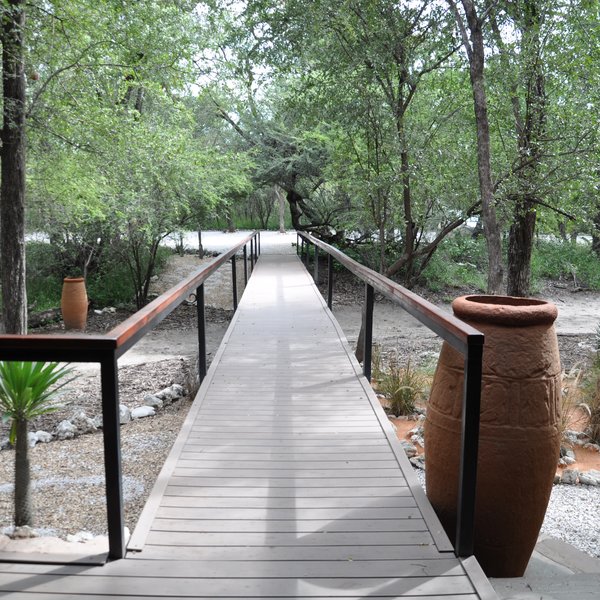
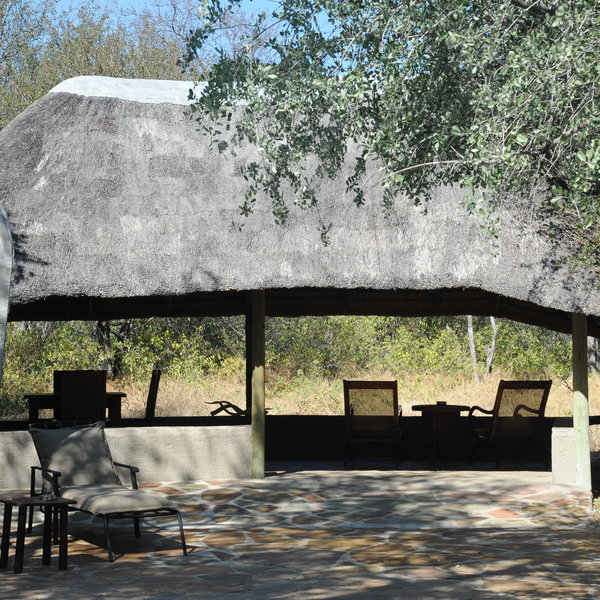
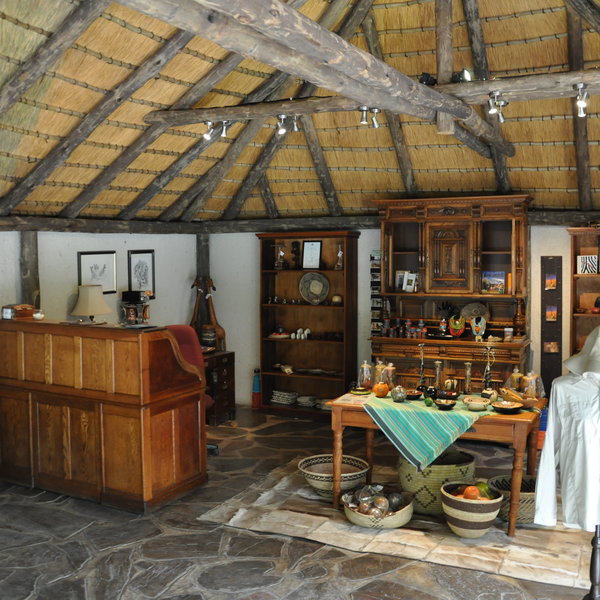
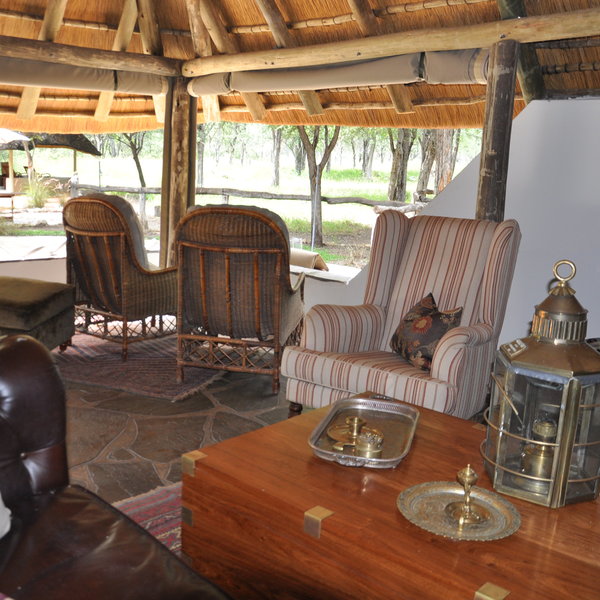
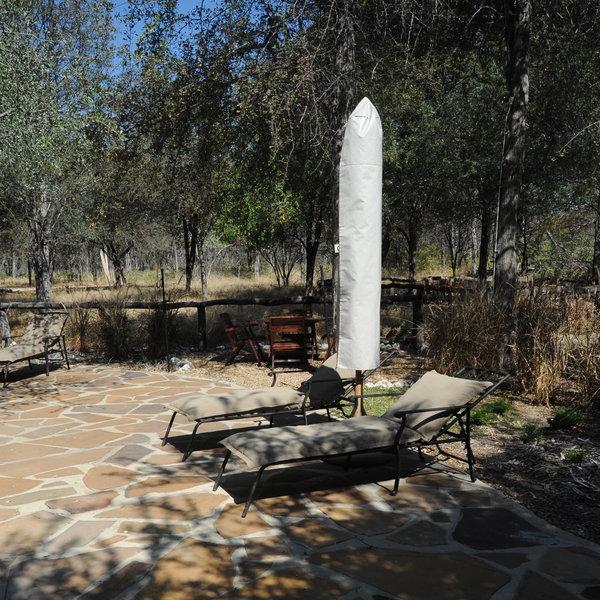
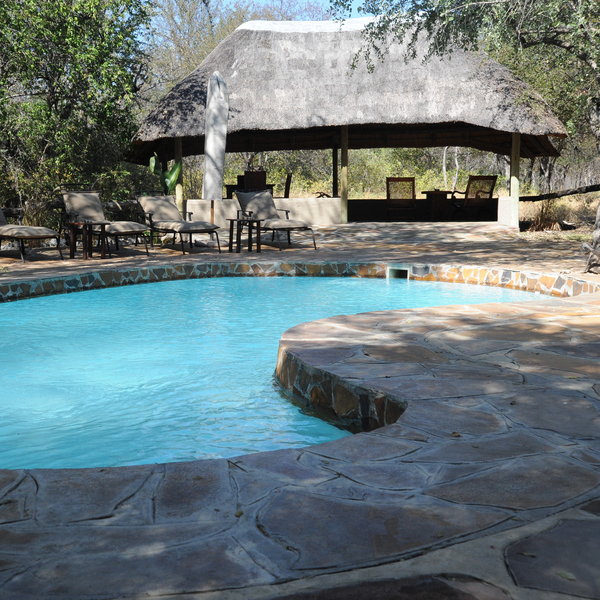
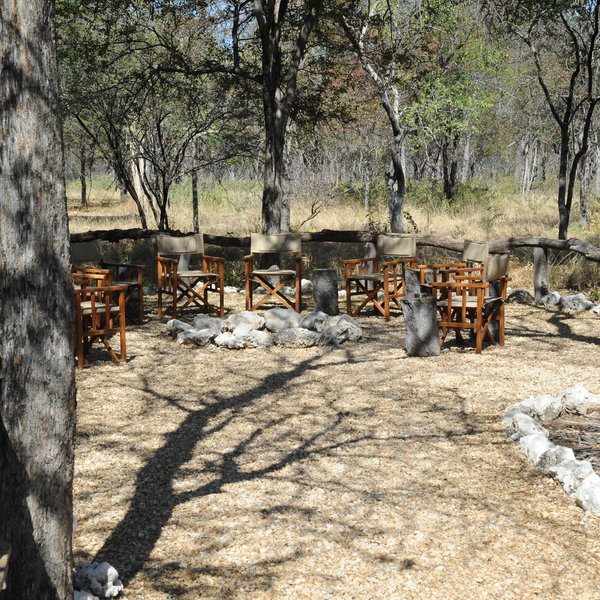
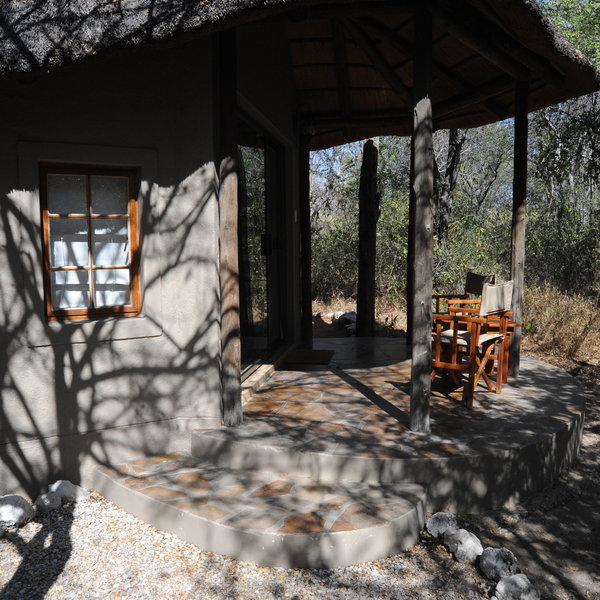
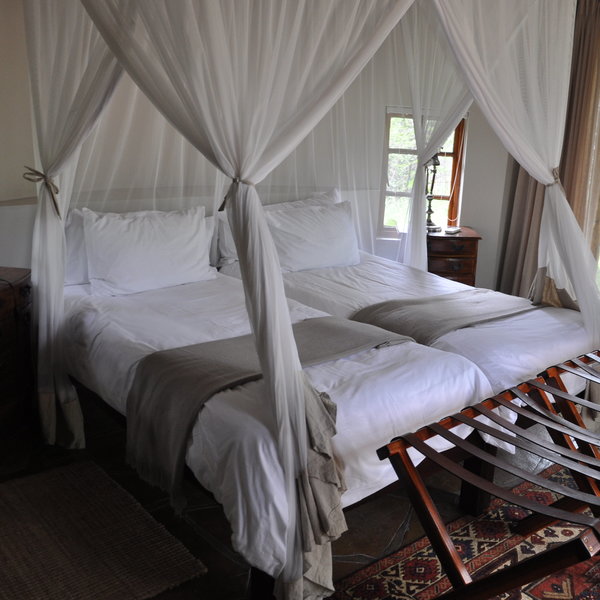
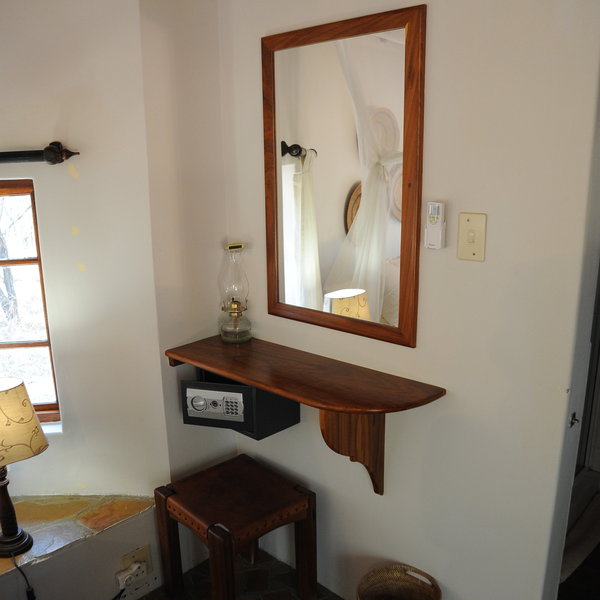
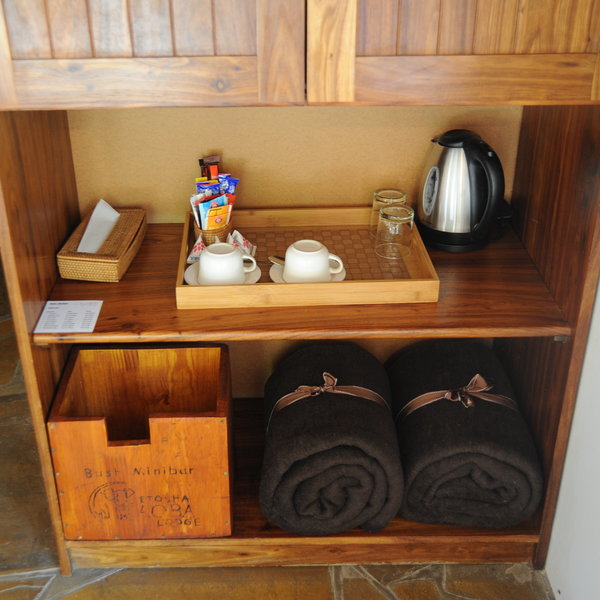
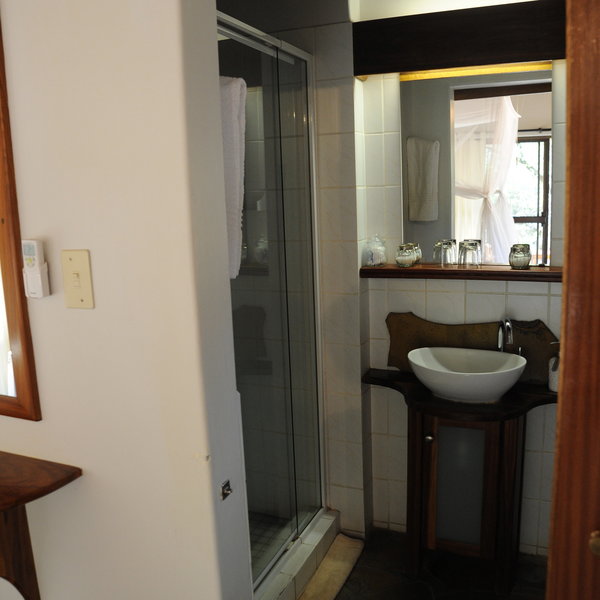
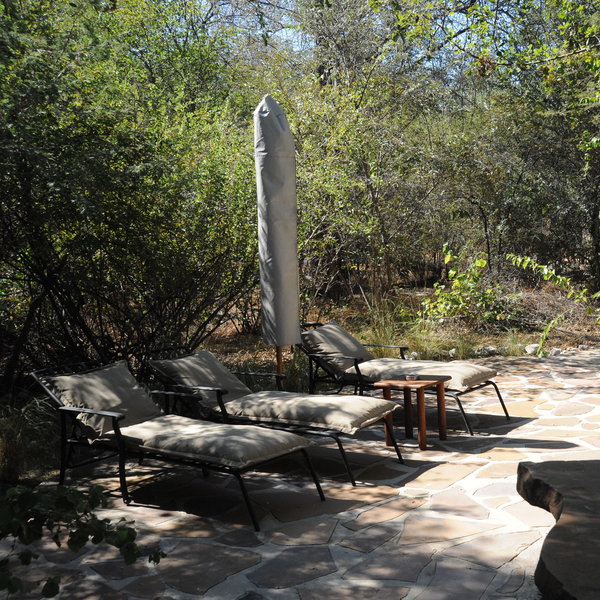
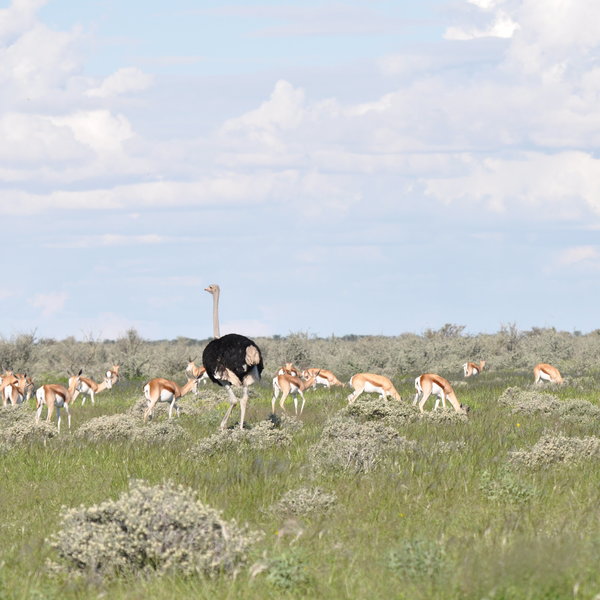
Expert Africa's gallery
When we travel we take lots of photos ourselves to give you a real and un-edited view of the safaris. See our 20 pictures of Onguma Forest Camp to get the candid view.
View galleryOnguma Forest Camp: Our full report
Just 15 minutes' drive from Etosha's eastern entrance gate, and about 12–13km from the main road, the established ...
... and comfortable Onguma Forest Camp (formerly known as Etosha Aoba Lodge) stands in tamboti forest on the private Onguma Reserve, which shares a boundary with Namibia’s foremost wildlife park.
The Onguma Nature Reserve dates back to 1998, when one farm here was proclaimed as Fischer's Pan Private Nature Reserve. Other farms were added in 2007, and more than 200km of internal fences removed – so that the reserve now covers 340km².
The original Etosha Aoba Lodge was opened in 1994, making this the second oldest camp in the area. Its entrance, however, was moved when it came under the Onguma umbrella in 2009, and it now shares a gate with the other four properties on the reserve: Onguma Bush Camp, Onguma Tented Camp, Onguma Camp Kala, and Onguma the Fort . As a result, the driving time from Forest Camp to Etosha National Park was considerably reduced.
Onguma Forest Camp has 11 thatched en-suite bungalows in four different styles: Bush suites, Explorer bungalows, Heritage bungalows, and a honeymoon bungalow. Each has a small outside area with a birdbath and a couple of chairs, and many have private verandas that overlook the Omuramba Ovambo – a dry riverbed.
- The four Heritage bungalows are the smallest of the room types.
- Three Explorer bungalows are the newest and arguably the nicest rooms at the camp. These feature slightly larger bedrooms and bathrooms than the Heritage bungalows, and have parking space alongside. Inside, the rooms are furnished with old travel trucks, rugs and other safari-inspired furniture.
- The Honeymoon room is the most private room at the camp, and is tucked further into the surrounding bush than the others. Aside from the addition of an outside bath and shower, it is the same as the Explorer bungalows.
- The three large Bush suites have both a bedroom and a separate lounge, where a couch can be added for up to two children to sleep.
The main area of Forest Camp focuses on a large open-sided restaurant, partly under thatch, with a bar to one side and a terrace overlooking a small waterhole, where meals are sometimes taken. Simply decorated and furnished, it has a wine cellar in one corner where guests can taste the wines and choose a bottle to enjoy with dinner. A curio shop and a library complete the indoor facilities, while outside is a swimming pool.
Although we were unable to stay on our last visit in April 2024, we did see a few antelope at the waterhole, and we understand that a pride of lions are now regular visitors to the waterhole in the drier months, as well as warthog. The reserve also has good birding.
Onguma Forest Camp offers its own activities, but most visitors use the camp as a base for self-drive safaris into Etosha National Park. If you don't want to drive yourself, there are game drives from the camp in an open vehicle with a professional guide. These usually last around four hours and are offered both morning and afternoon.
On the Onguma Reserve itself, there are sundowner drives, and the option of a one-and-a-half-hour morning nature walk.
Geographics
- Location
- Etosha National Park, Namibia
- Ideal length of stay
- Two nights would be ideal here.
- Directions
- The entrance to Onguma Forest Camp is next to the Von Lindequist Gate, on the eastern side of Etosha National Park. The camp lies about 12–13km from the main road.
Onguma has its own airstrip for guests who are flying in. - Accessible by
- Self-drive or Fly-and-Transfer
Food & drink
- Usual board basis
- Bed & Breakfast
- Food quality
- We did not get the chance to eat here on our most recent visit in April 2024, but the menus are similar to when we stayed previously.
A buffet breakfast included homemade croissants (rather small!), as well as cereals, fruit, yoghurt, jams and spreads with a choice of tea, coffee or juice. A hot breakfast was cooked to order.
Lunch was a set menu of salads, toasted sandwiches or light hot dishes.
Dinner is a three-course set menu. When a member of our team last stayed, their meal started with stuffed mushrooms with coleslaw and tartare sauce. For the main course they had chicken stuffed with feta cheese and spinach, served with rice, beetroot and gem squash and sage sauce. Dessert was a poached pear and peach with a ginger cream sauce. - Dining style
- Individual Tables
- Dining locations
- Indoor and Outdoor Dining
- Further dining info, including room service
- No
- Drinks included
- Drinks are not included here.
Children
- Attitude towards children
- Onguma Forest Camp is not fenced, and does not accept children under seven.
- Property’s age restrictions
- No children under seven years of age. Children aged over ten years may join guided game drives into Etosha National Park, but families with children aged 7-10 will need to book a private vehicle and guide.
- Special activities & services
- None
- Equipment
- It is possible to add a sleeper couch for up to two children in the Bush suites.
- Generally recommended for children
- Onguma Forest Camp is unfenced and we do not recommend it for children under about ten years of age.
- Notes
- The camp is not fenced and neither is the pool, so children absolutely must be under the supervision of their parents at all times.
Our travellers’ wildlife sightings from Onguma Forest Camp
Since mid-2018, many of our travellers who stayed at Onguma Forest Camp have kindly recorded their wildlife sightings and shared them with us. The results are below. Click an animal to see more, and here to see more on our methodology.

100% success

100% success

83% success

83% success

80% success

67% success

67% success

40% success

40% success

33% success

20% success

17% success

17% success

0% success

0% success

0% success

0% success
Communications
- Power supply notes
- Back-up generator
- Communications
- There is a central phone and internet access in the main area, with free WiFi available throughout. Cellphone reception is good.
- TV & radio
- None
- Water supply
- Borehole
- Water supply notes
- The bungalows have flush toilets and the showers are plumbed in.
Sustainability
Oshivelo Farming and Onguma Anti-poaching Unit
As well as providing excellent safari lodges, in 2012 The Onguma group set up a large-scale sustainability project, Oshivelo Farming, which successfully provides jobs and income for many of the local people - at present there are over 180 permanent, plus another 100 seasonal employees. They have cultivated and developed a farm that has grown in size over the years, which now produces a vast array of vegetables, so much so that several hundred tonnes of vegetables are currently sold monthly. Currently it’s one of the top five vegetable producers in Namibia! Through the project, they are also able to help the local Oshivelo community with equipment etc. for the school and they also built the village soccer field.
Onguma are also involved in conservation and as such run the Onguma anti-poaching unit, on the reserve to help protect the endangered population of rhino. Since its introduction, the poaching of rhino on the reserve has dramatically decreased, which is great news!
See more great sustainability projects in Namibia
Health & safety
- Malarial protection recommended
- Yes
- Medical care
- The nearest doctor is in Tsumeb, an hour's drive away. The camp also has a basic first-aid kit on site.
- Dangerous animals
- High Risk
- Security measures
- The main entrance gate is locked at night.
- Fire safety
- There are fire extinguishers in all the rooms and around the main area.
Activities
4WD Safari
Birdwatching
Guided walking safari
Private activities
Extras
- Disabled access
- Not Possible
- Laundry facilities
- There is a laundry service provided at an extra charge.
- Money
- Each bungalow is fitted with an electronic safe. Currency exchange here is not possible.
- Accepted payment on location
- Payment may be made in South African rand or Namibian dollars cash, or by Visa or Mastercard.
Plan and book your trip with Expert Africa
All of our trips are tailor-made, so we'll always adapt them to suit you. Talk to an Expert and let us plan and arrange your perfect trip.

Talk to an Expert
Call or email us now! We’ll match you with the Specialist in our team who is best suited to help you. Then together we can start planning your trip.

Set up your itinerary
Based on our experience and your ideas, your specialist will create a detailed, costed itinerary. We’ll refine it together, until we have a trip that you’re perfectly happy with.

Prepare for your trip
The same Specialist will make the seamless arrangements for your trip, send you detailed travel documents, and be available to answer any questions before you depart.

Travel with peace of mind
After you set off, you’ll be cared for by our partners in Africa, most of whom have worked with Expert Africa for decades. And if you ever need us urgently, we’re available 24/7.

When you return
We love to learn about your trip, and so will always be grateful if you’ve the time to give feedback to your Specialist when you return.
Onguma Forest Camp's location
Look closer at the environment and surroundings of Onguma Forest Camp.
Other lodges in Etosha National Park
Alternative places to stay in this same area.
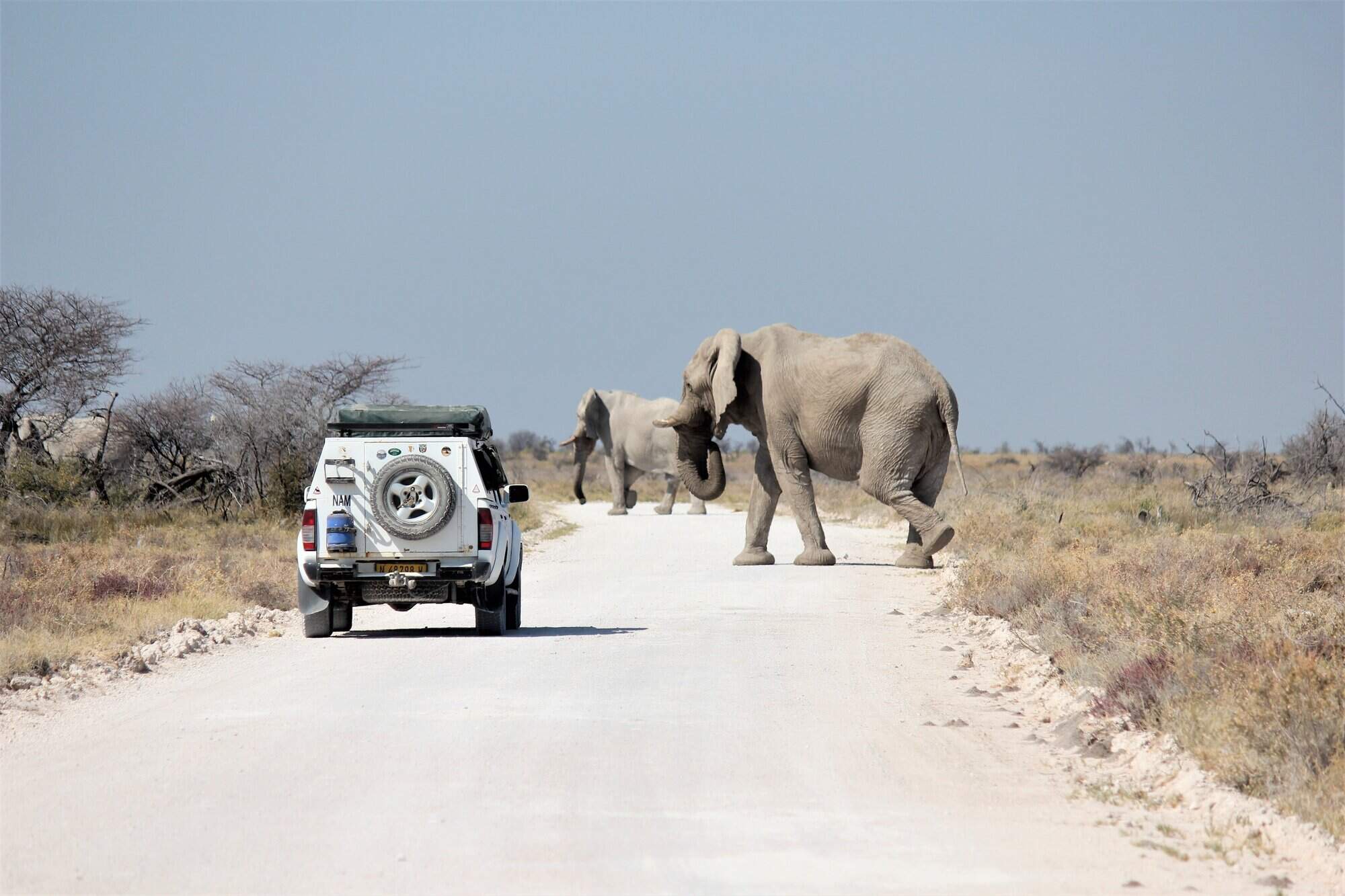
Okaukuejo Camp
Set within Etosha National Park, Okaukuejo Resort is a large camp with a productive, floodlit waterhole.
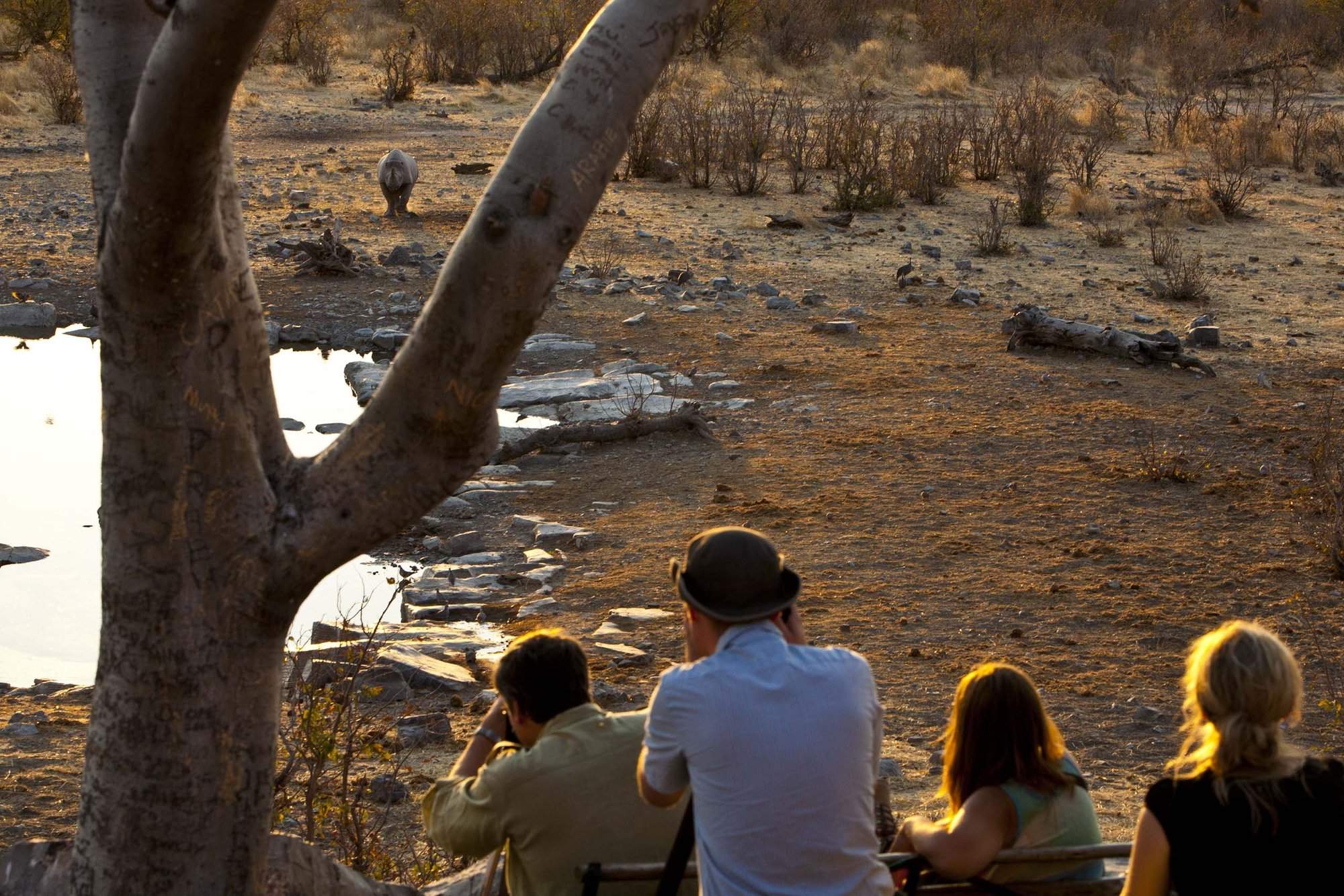
Halali Camp
The smallest of Etosha's erstwhile restcamps, overlooking its own floodlit waterhole, Halali has a superb location near the centre of Etosha Pan.
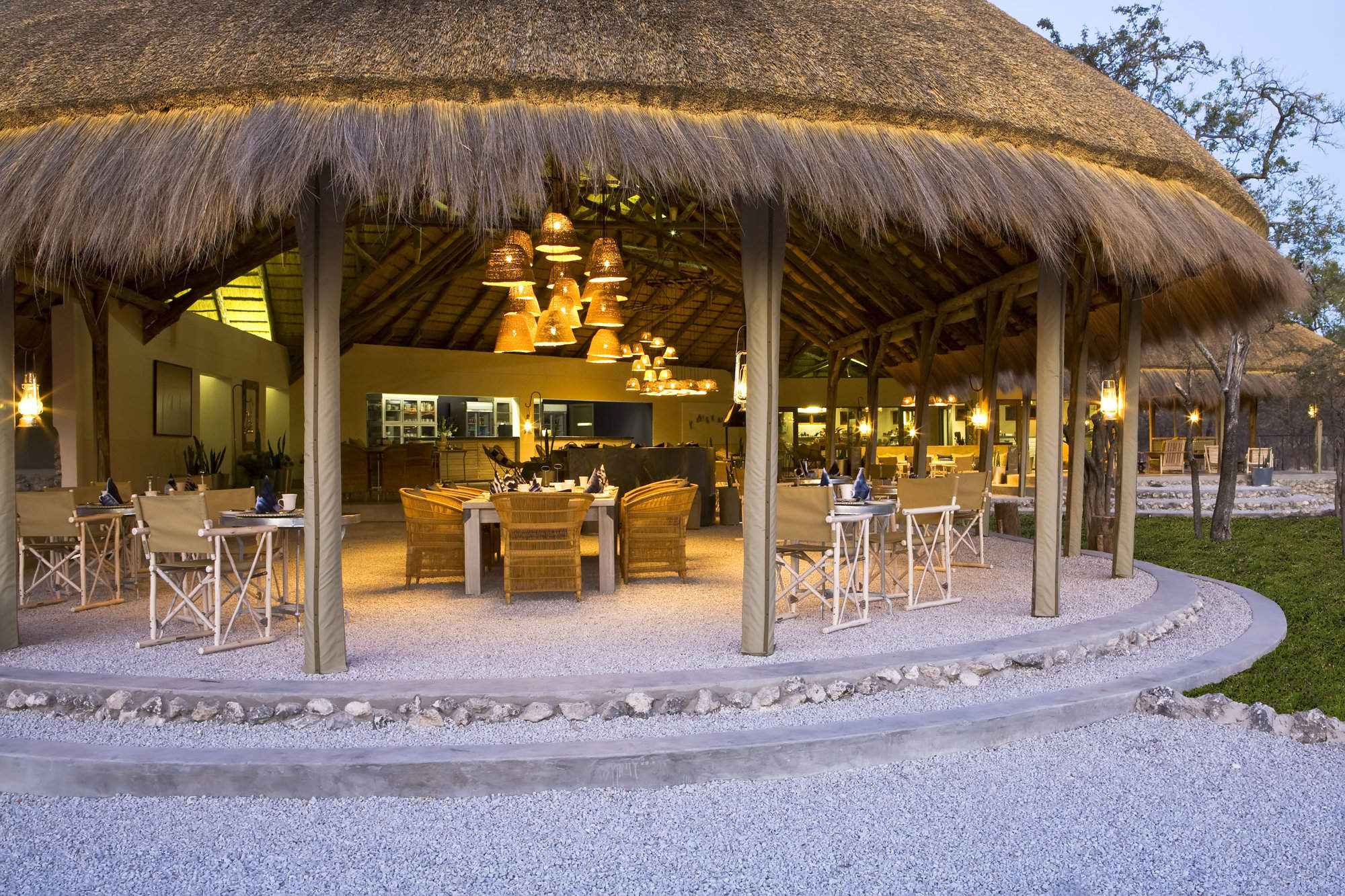
Mushara Bush Camp
The family-friendly Mushara Bush Camp offers great value and is an excellent base from which to explore Etosha National Park.
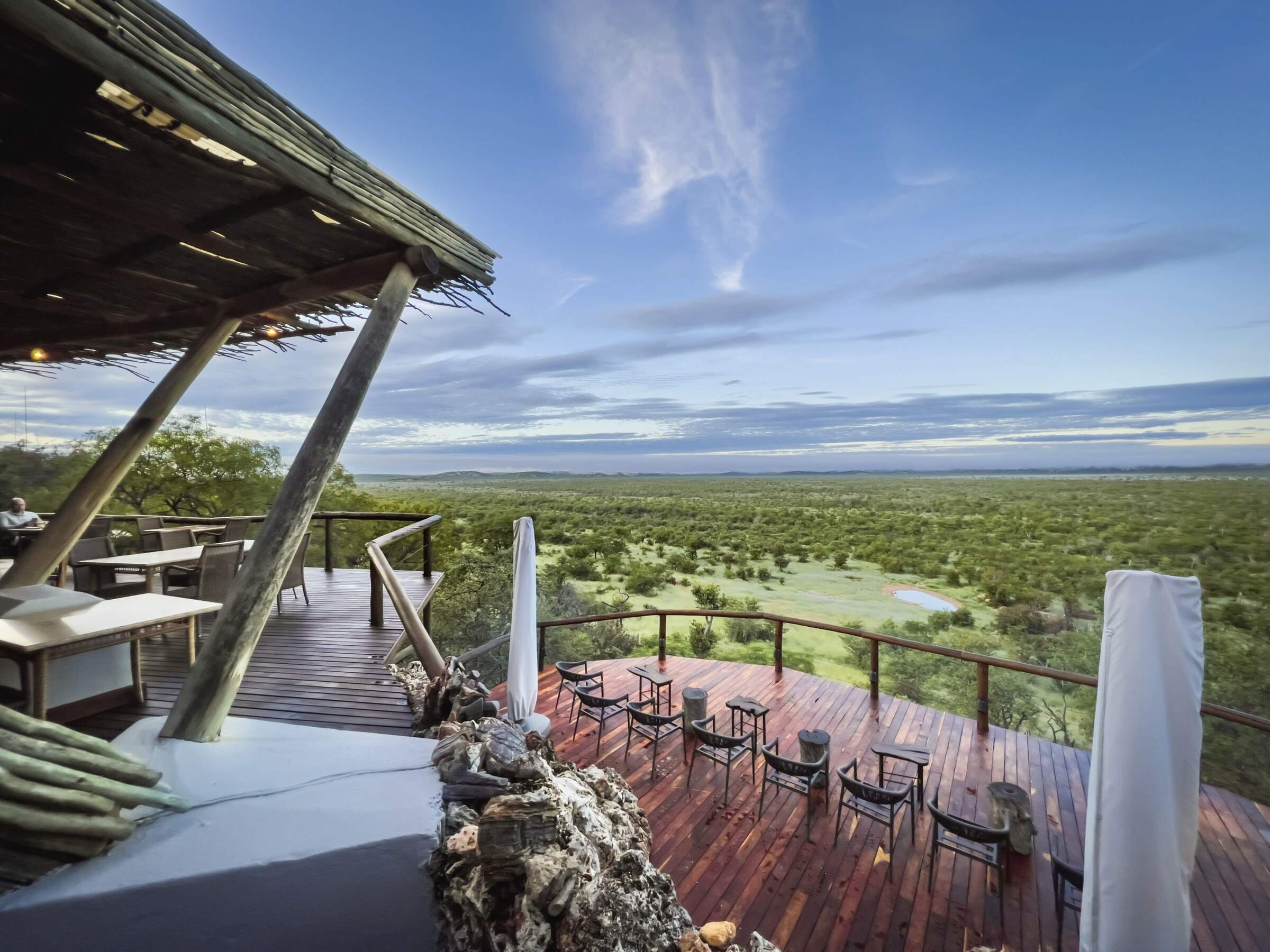
Ongava Lodge
With fantastic views over a private reserve bordering Etosha, the smart Ongava Lodge offers driving and walking safaris on the reserve, and guided drives in Etosha.
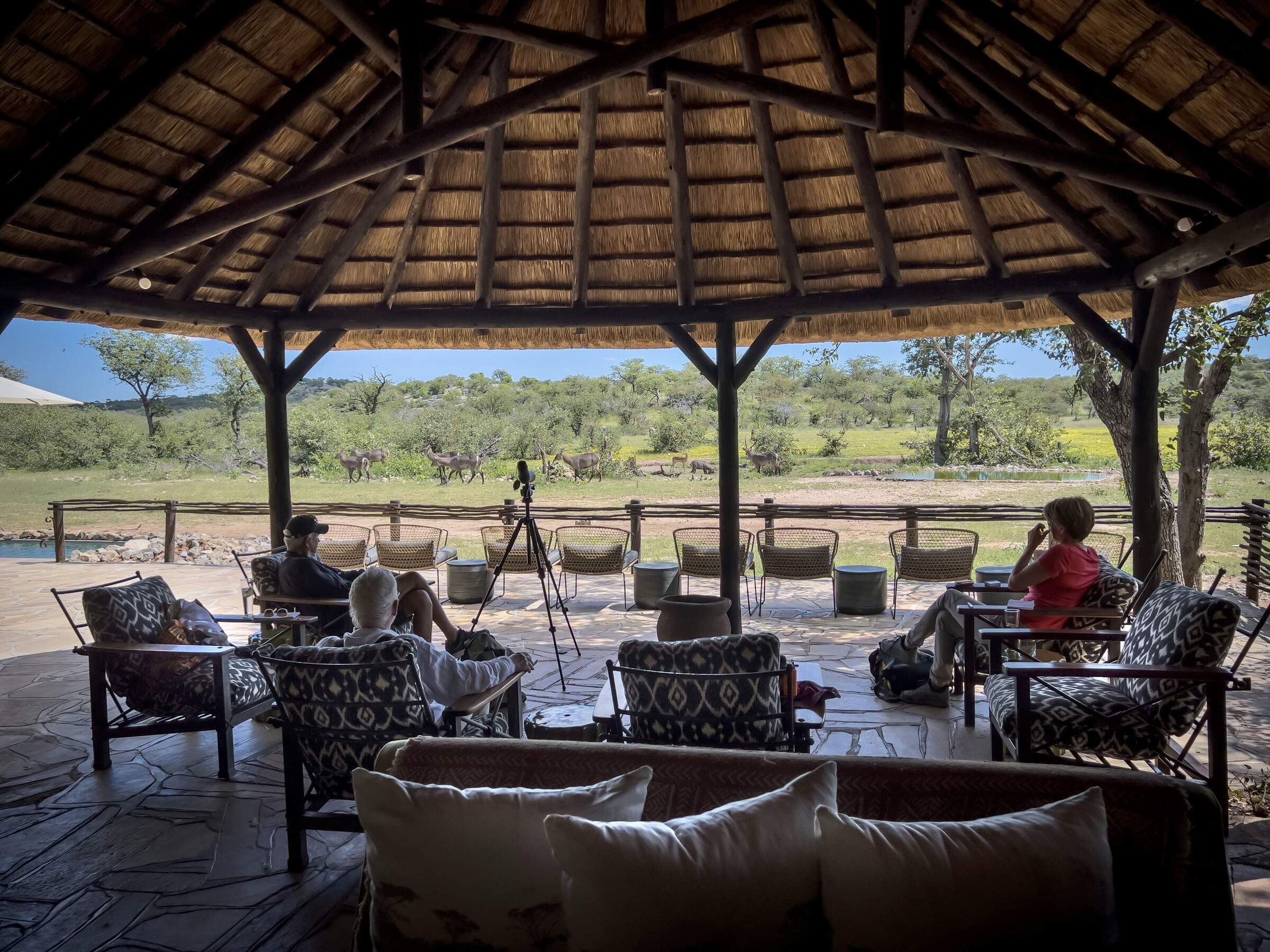
Ongava Tented Camp
Set around a waterhole on a private reserve, the small Ongava Tented Camp combines understated comfort with activities that include walks and night drives.
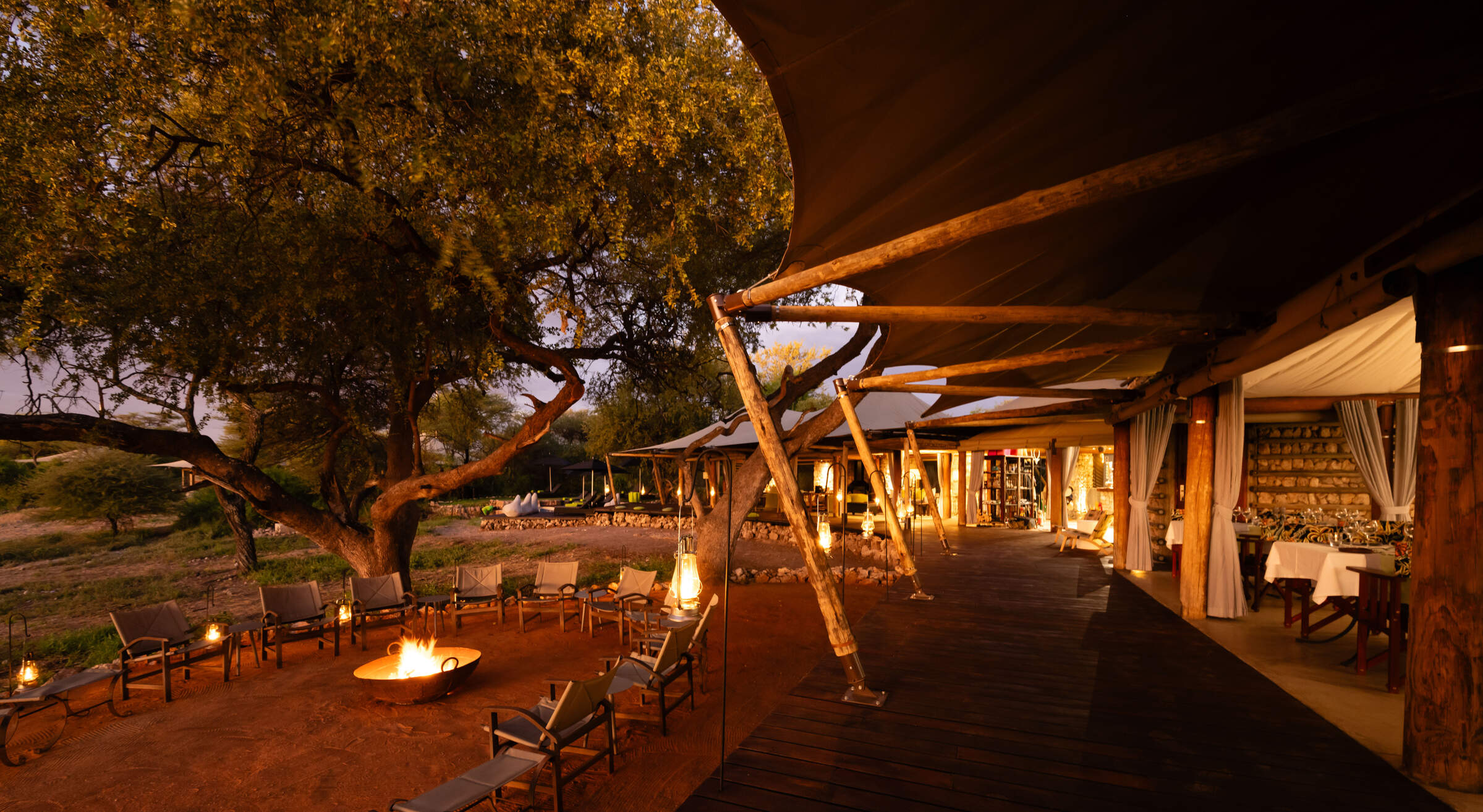
Onguma Tented Camp
Onguma Tented Camp is a lovely, little tented camp which centres around an attractive waterhole a short drive from the Von Lindequist Gate to eastern Etosha.
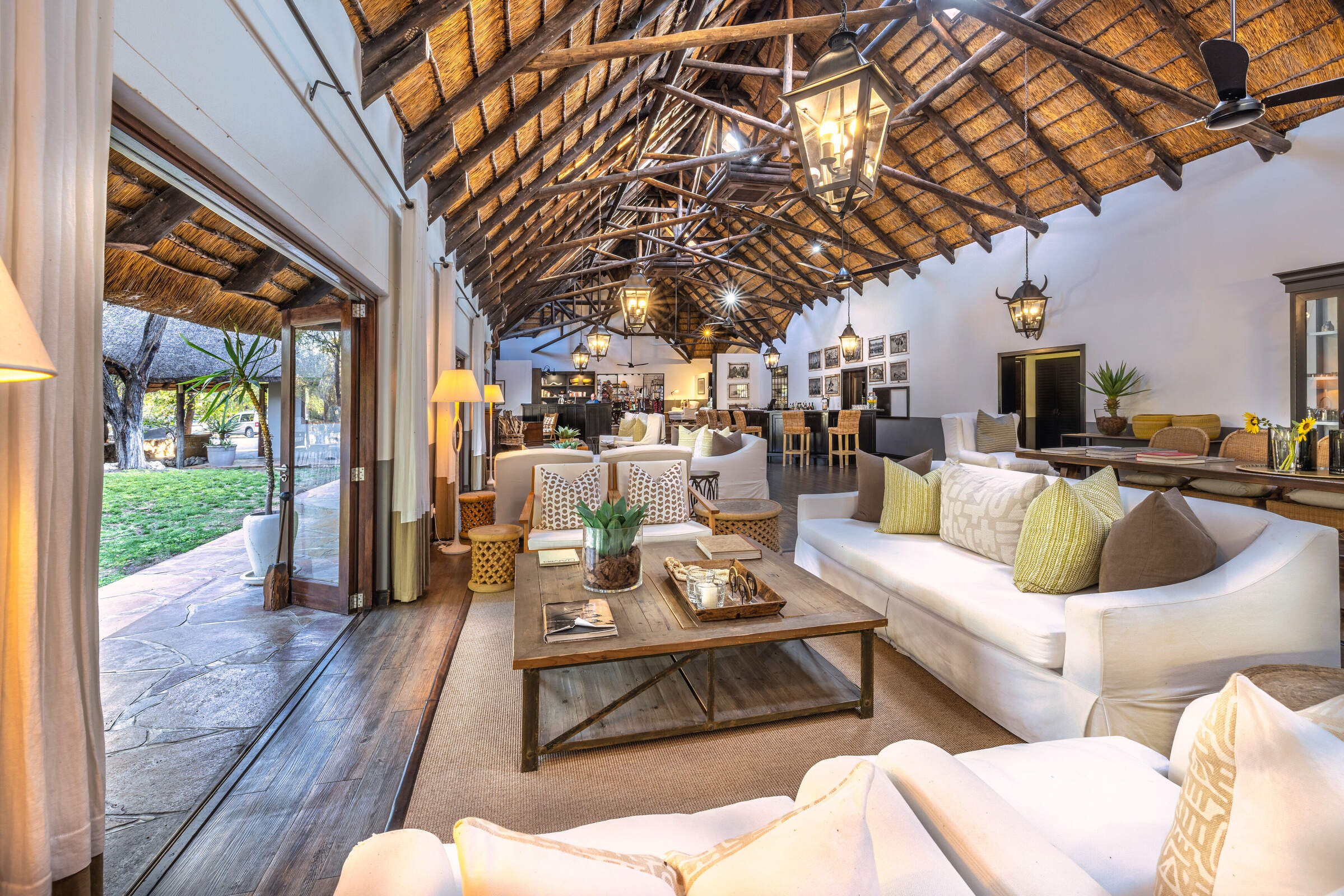
Mushara Lodge
Close to the eastern entrance to Etosha, the comfortable Mushara Lodge is well-placed for exploring the park in your own vehicle or on a guided drive.
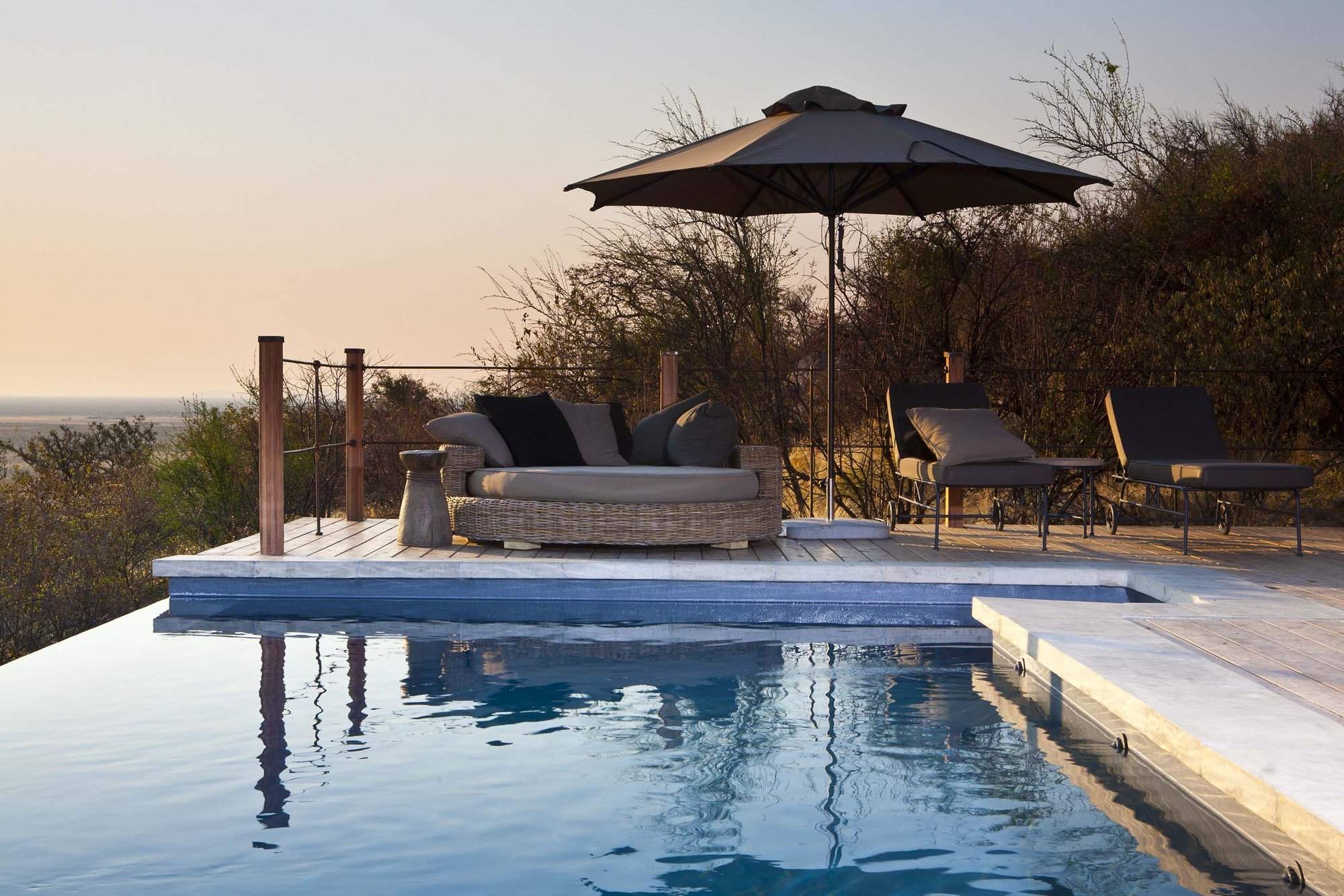
Dolomite Camp
Opened in 2011, Dolomite Camp allows visitors access to the far west side of Etosha National Park, which was previously off limits to most visitors.

Onguma Bush Camp
For great wildlife viewing without breaking the bank, the affordable and understated luxury of Onguma Bush Camp could be perfect.
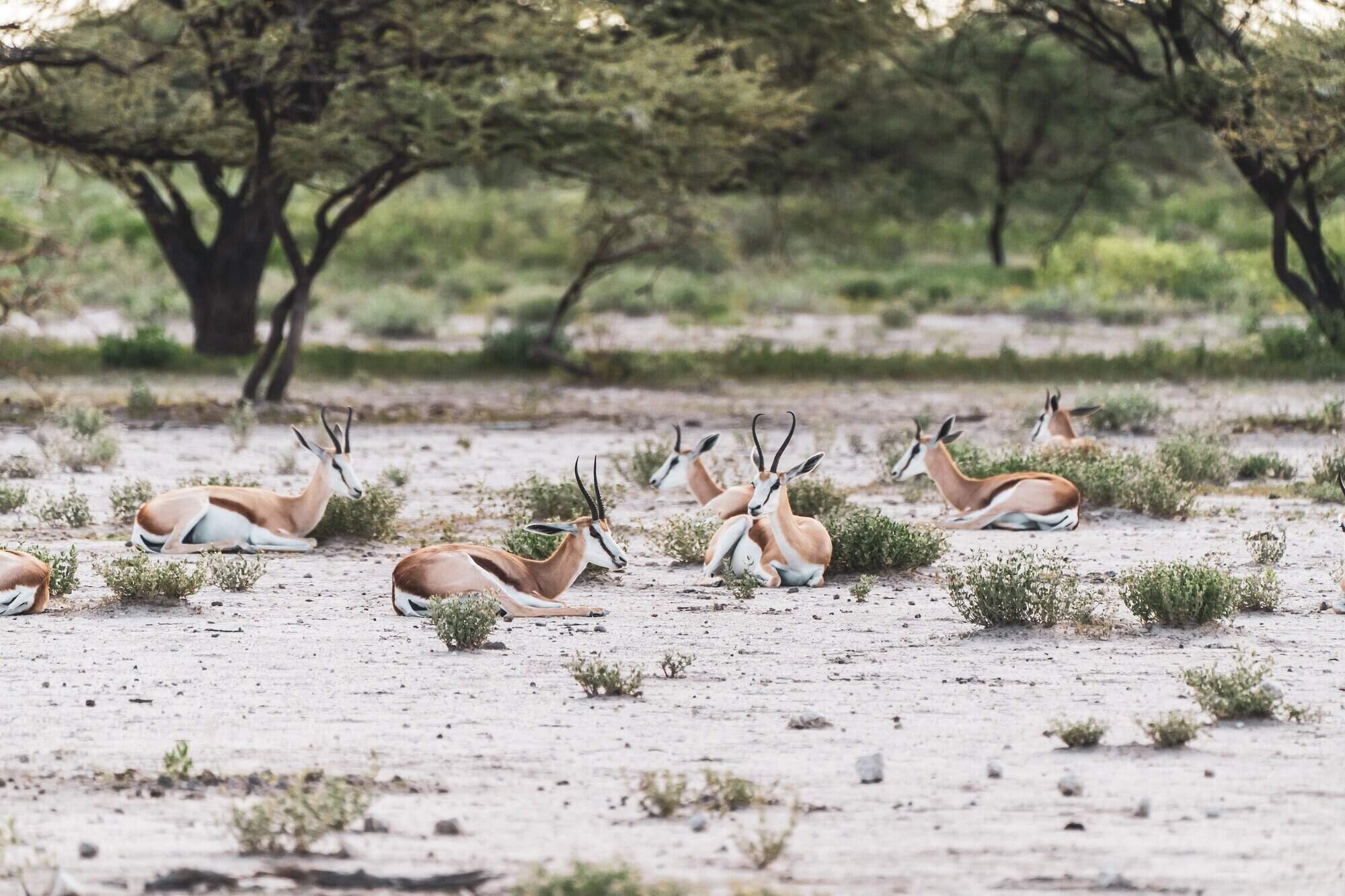
Namutoni Camp
Centred on an old fort, the government run Namutoni Camp is located just inside Etosha National Park, close to Fisher's Pan.
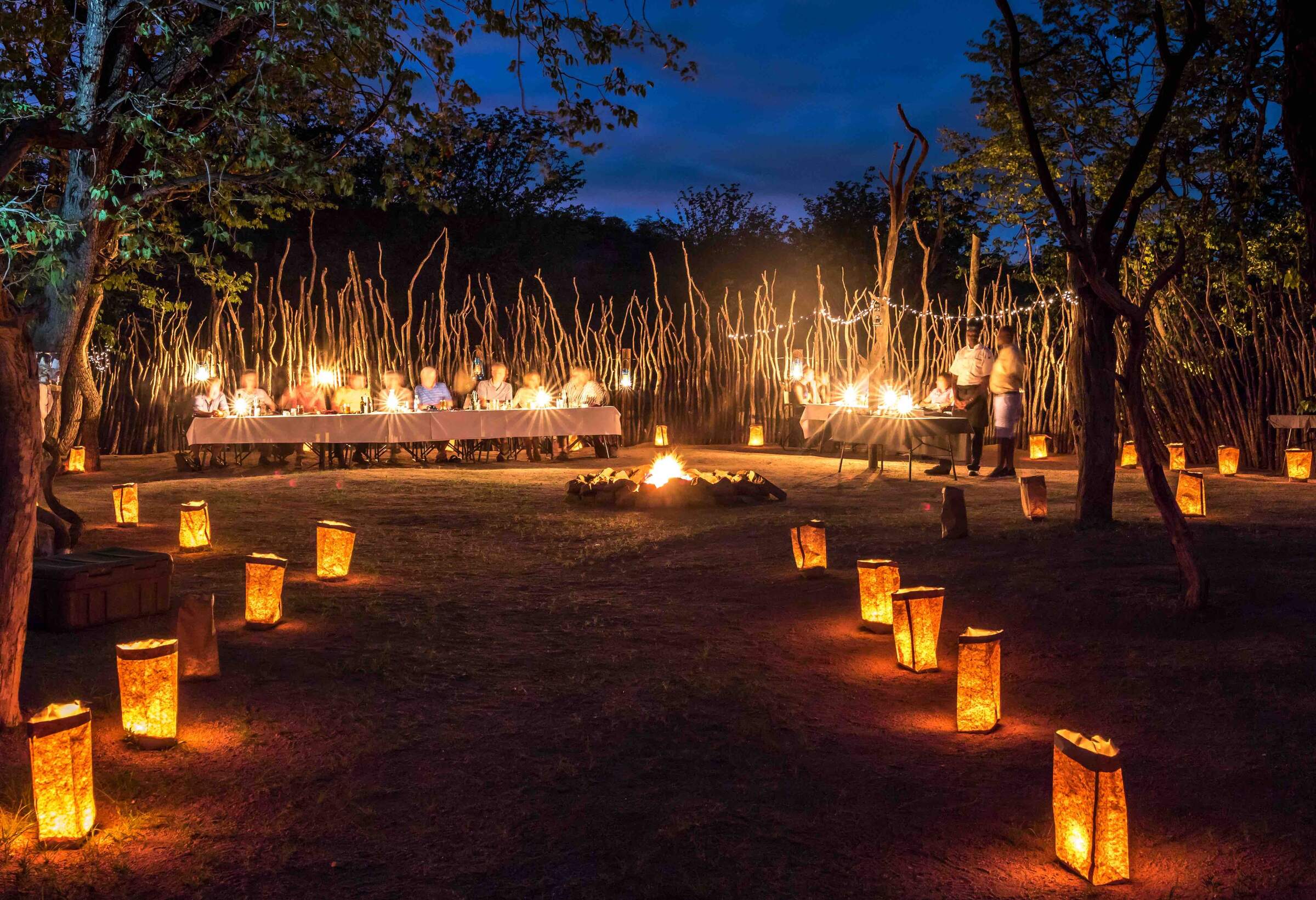
Hobatere Lodge
To the west of Etosha National Park, on the edge of Damaraland, Hobatere Lodge offers good game-viewing on its own reserve.
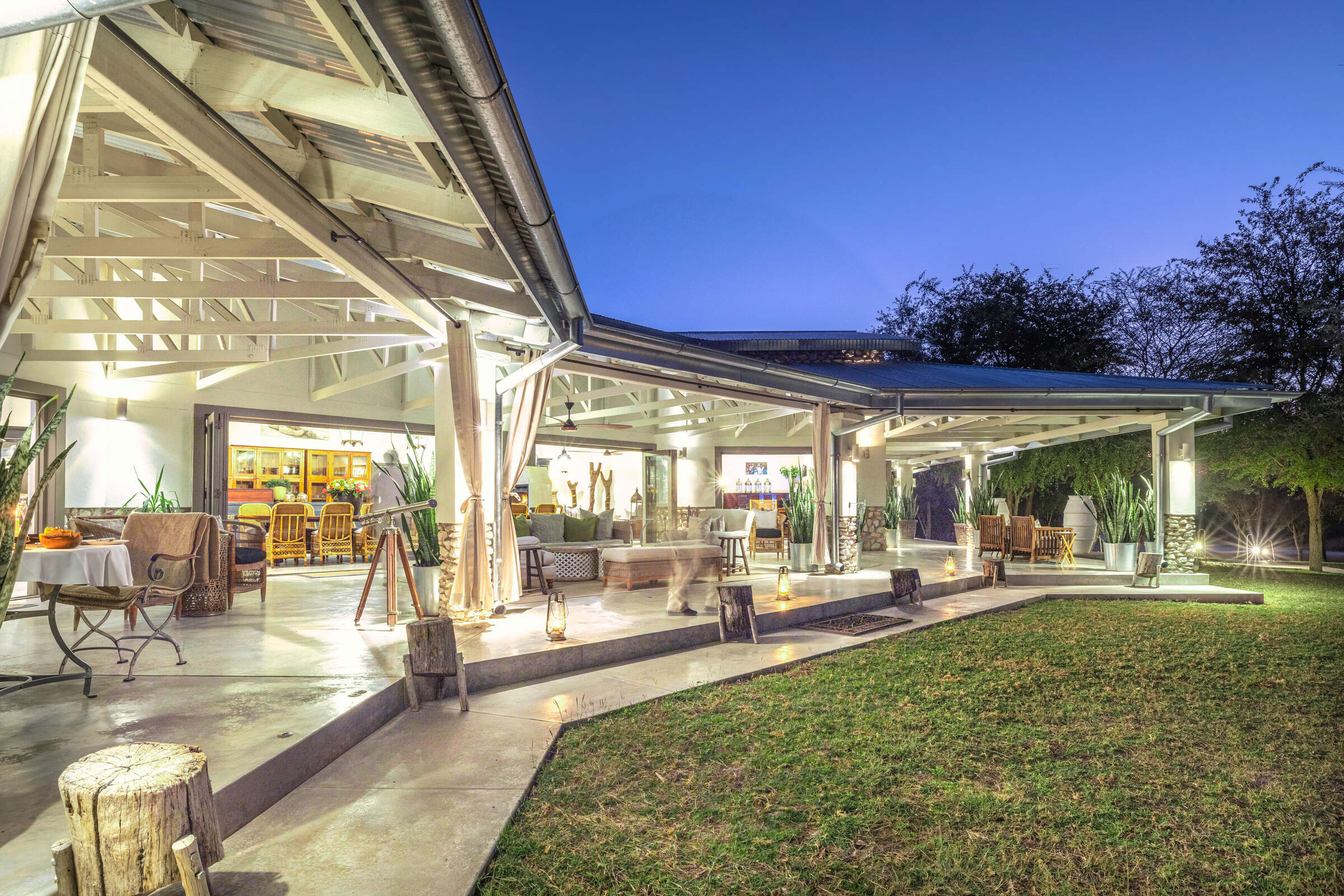
Mushara Outpost
Intimate and luxurious, Mushara Outpost is well-placed on a private reserve to explore nearby Etosha National Park on your own or on a guided drive.
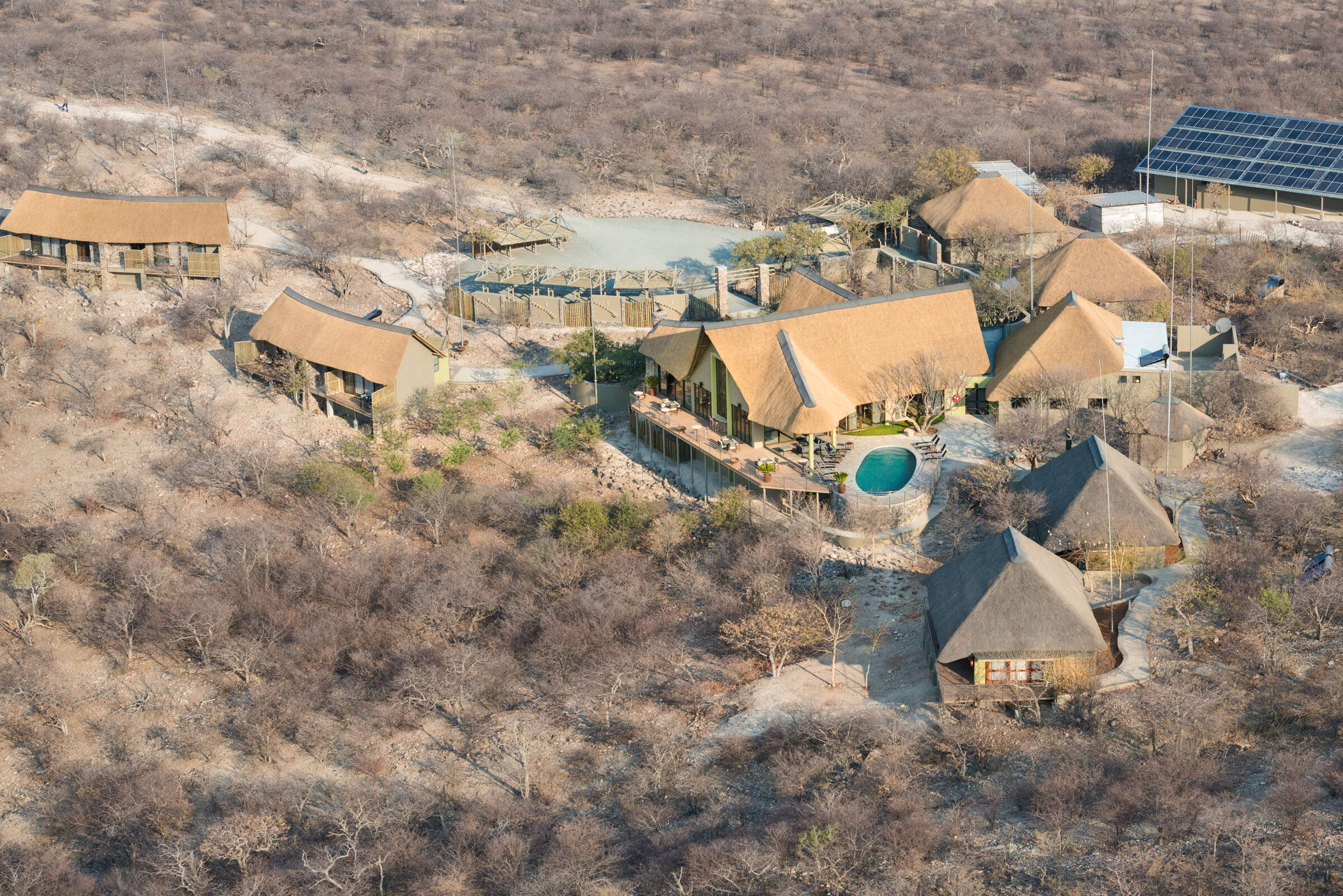
Safarihoek Lodge
At the heart of the private Etosha Heights Reserve, Safarihoek Lodge offers comfortable accommodation and excellent game-viewing.
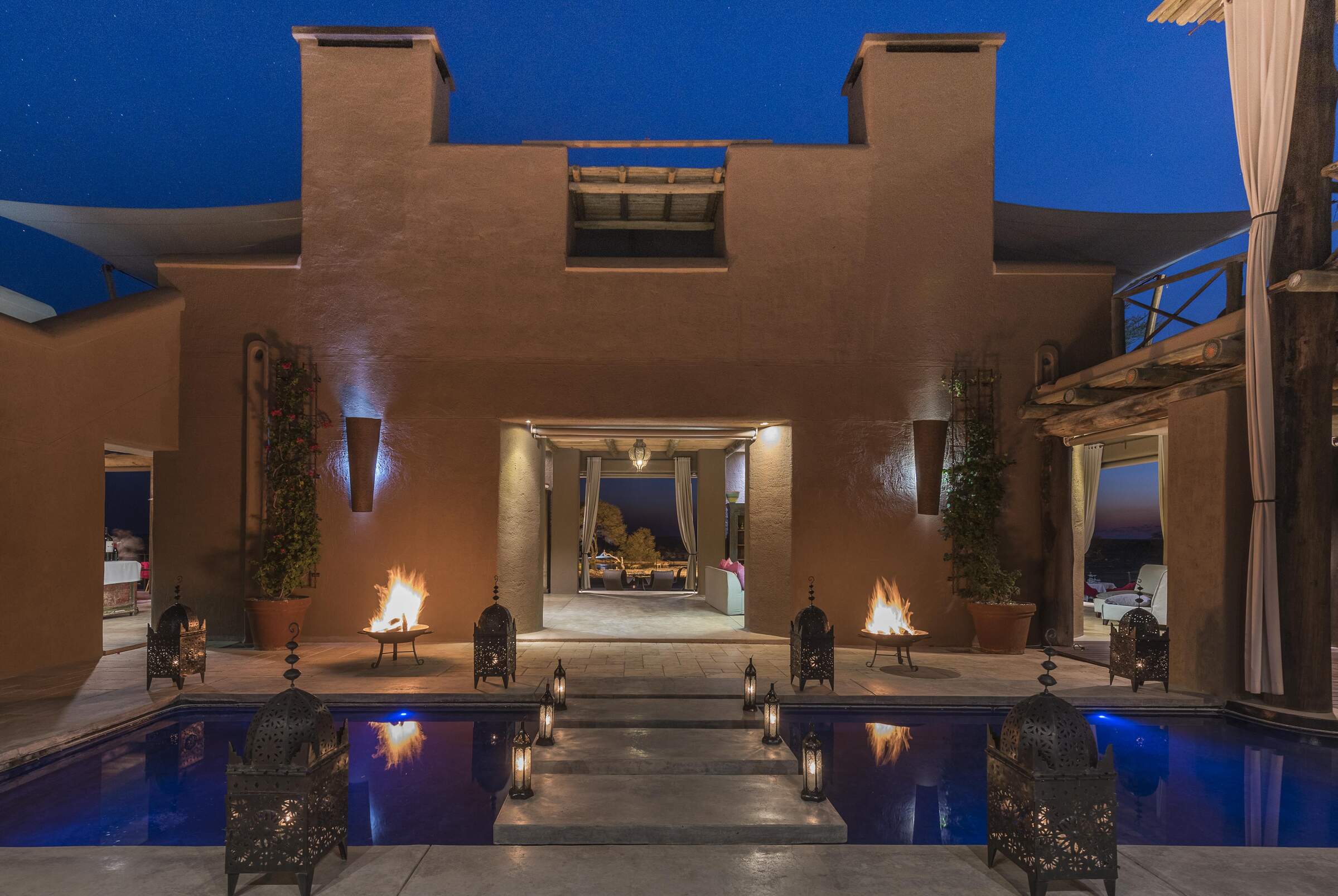
Onguma The Fort
The Fort is the jewel in the crown of the Onguma lodges, and arguably the whole of eastern Etosha.
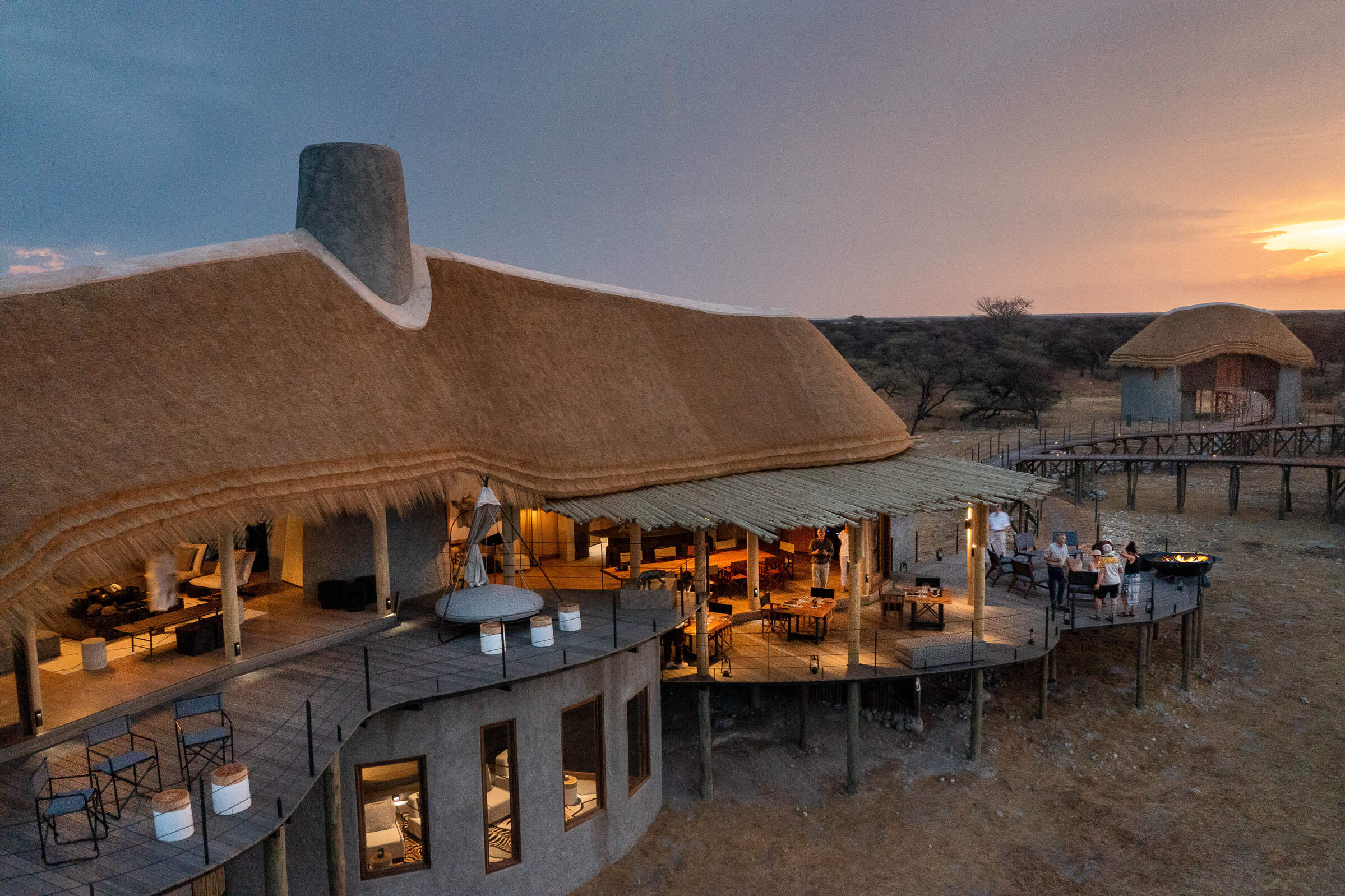
Onguma Camp Kala
For a bird’s eye view across African bush, the stilted rooms at Onguma Camp Kala are truly special.
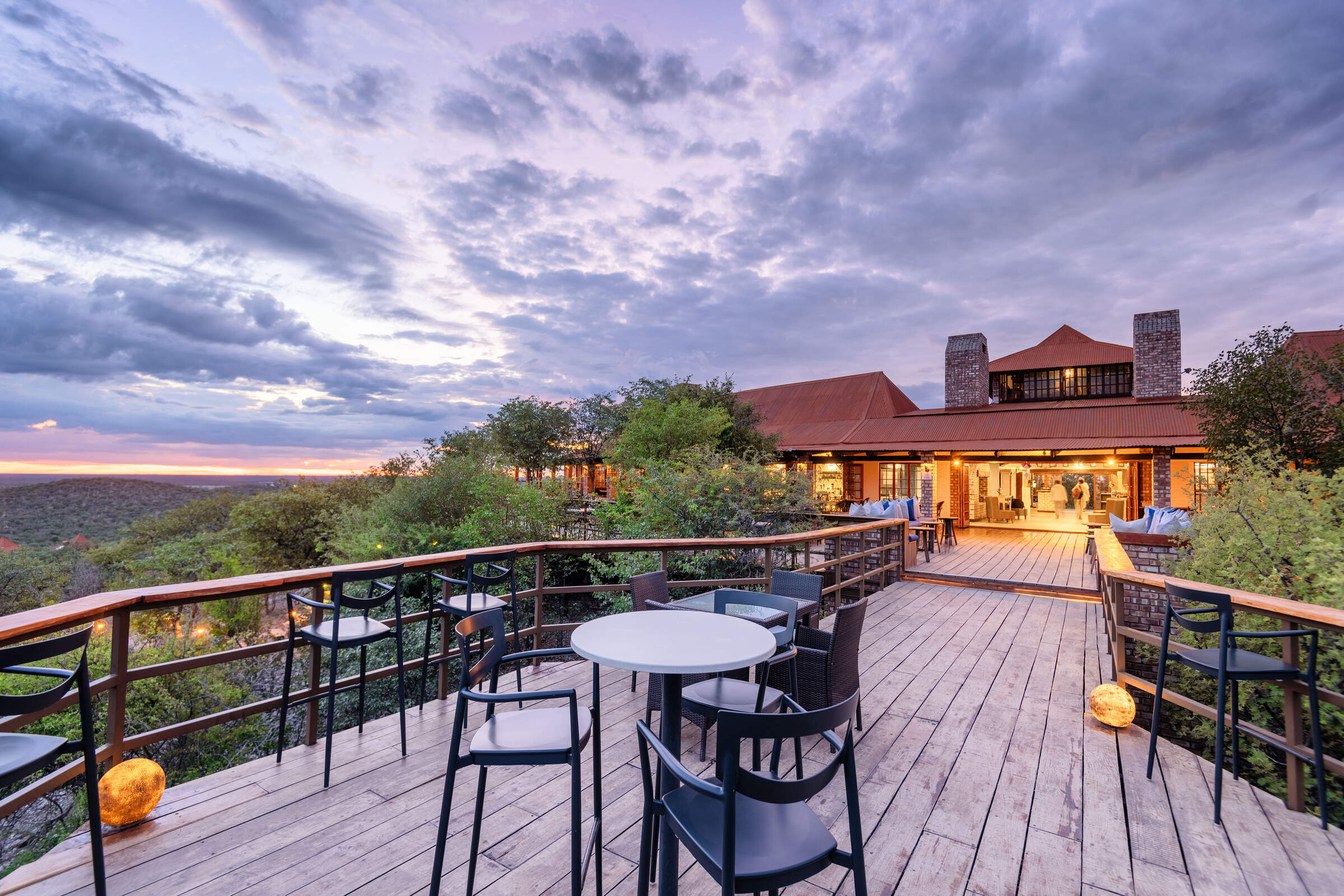
Etosha Safari Lodge
A short drive from Etosha National Park's southern entrance, Etosha Safari Lodge is a convenient base from which to explore the park.
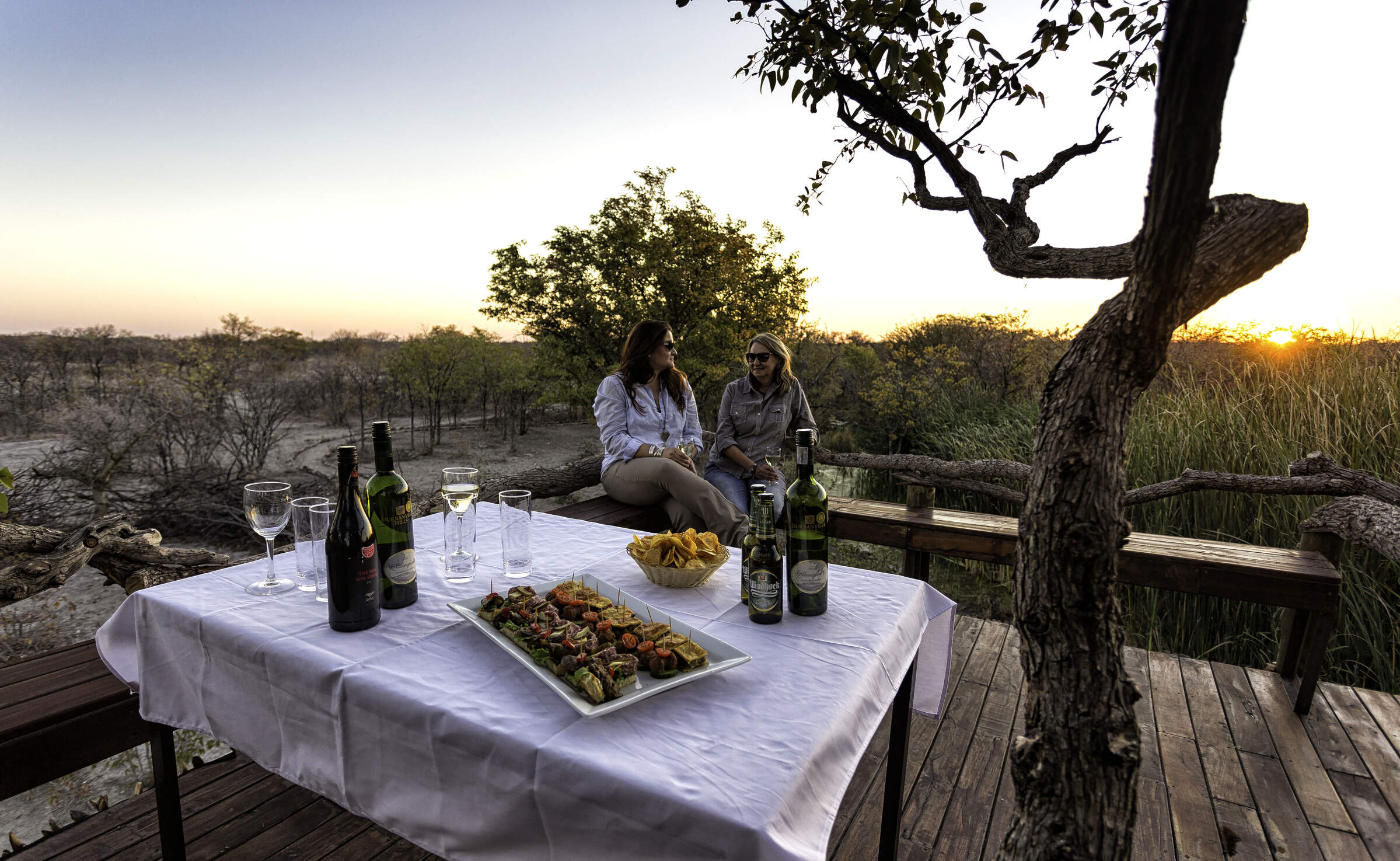
Taleni Etosha Village
Only 4km from Etosha's southern entrance, Taleni Etosha Village is an affordable base from which to explore the park.
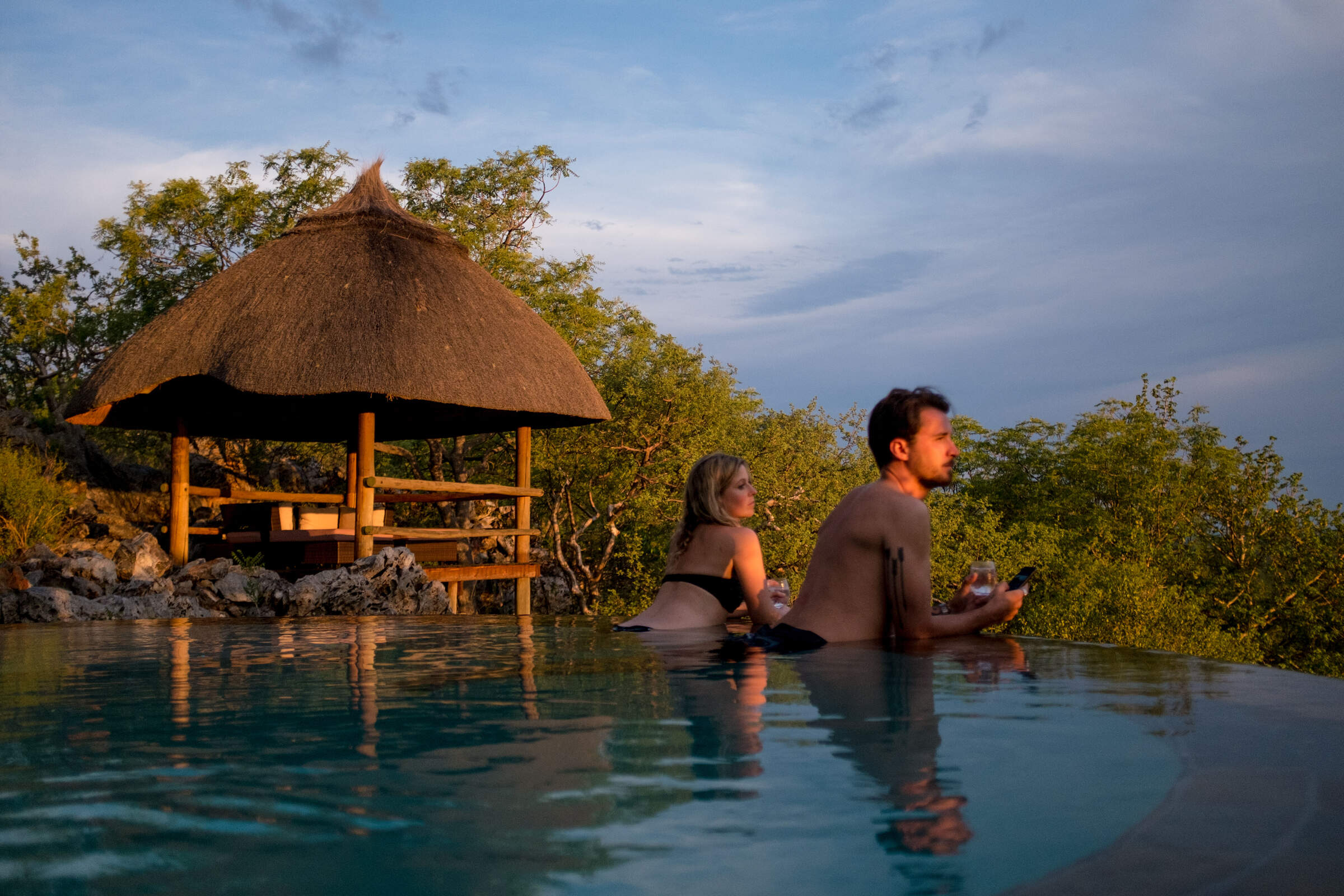
Little Ongava
The beautifully located and luxurious Little Ongava is a stunning place to stay in order to explore Etosha National Park and the private Ongava Reserve.
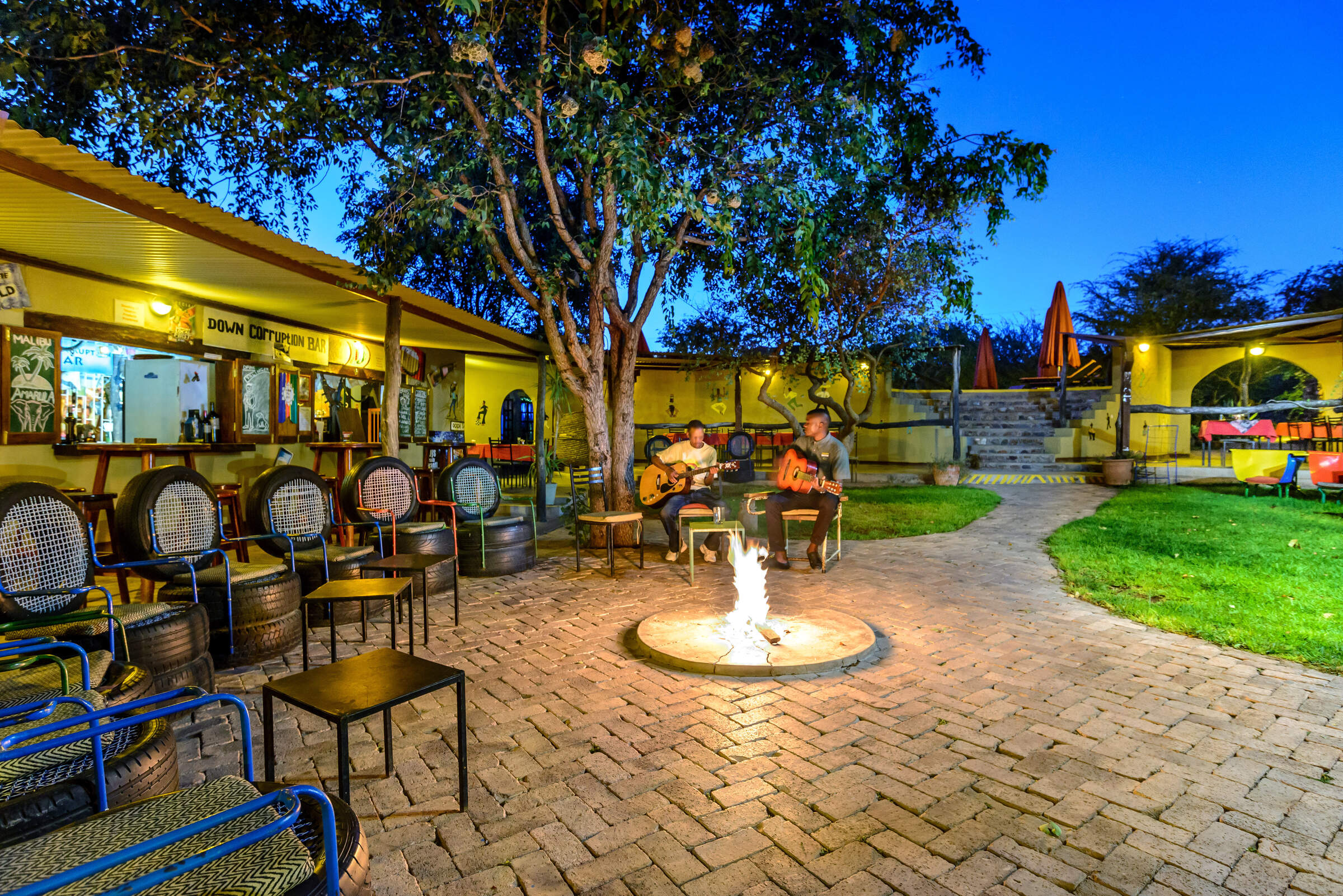
Etosha Safari Camp
Funky, low-key and very original, Etosha Safari Camp is well placed for visiting Etosha National Park on a self-drive or guided safari.
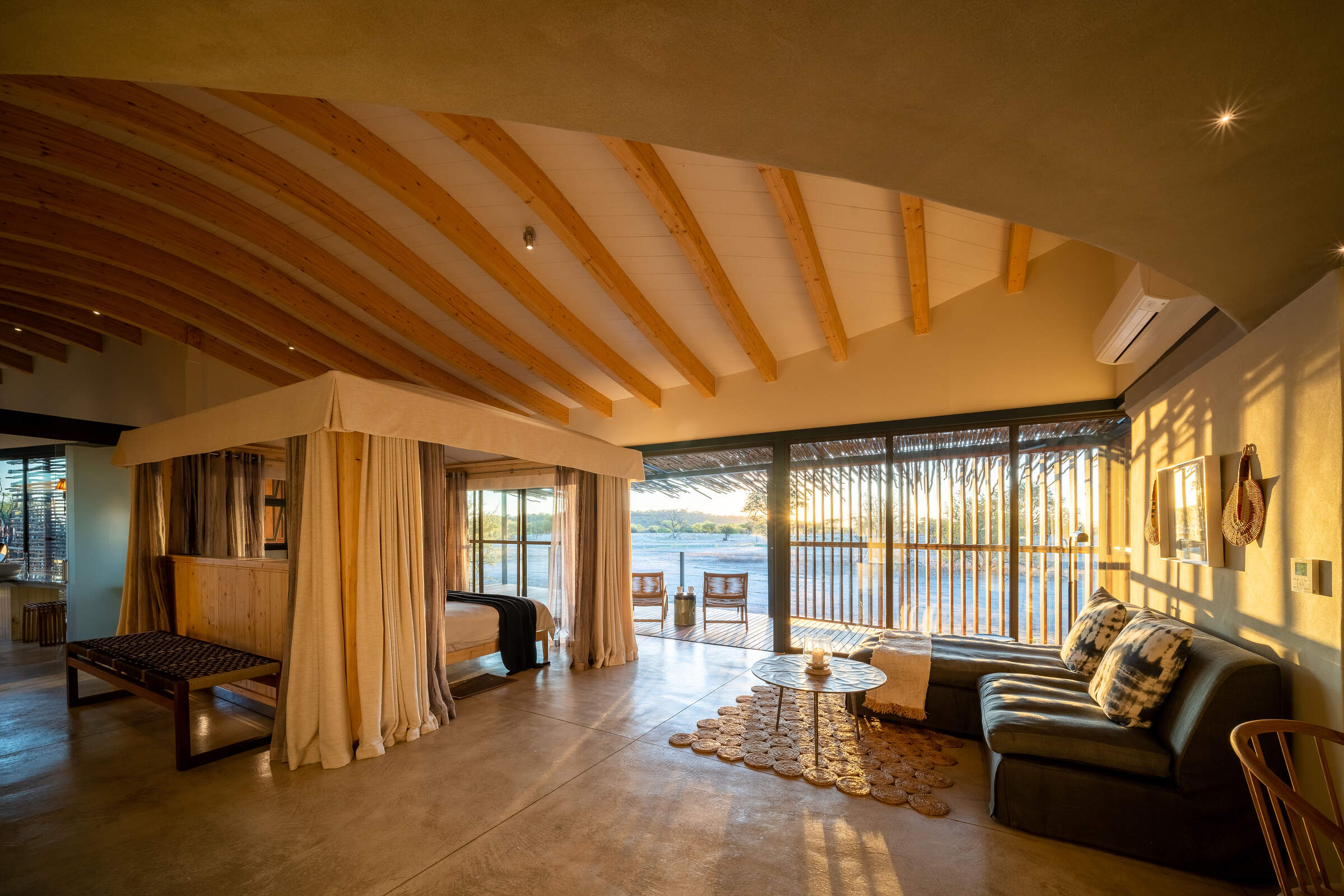
Andersson's at Ongava
With game drives on both its private reserve and in Etosha, Andersson's at Ongava also offers access to the Ongava Research Centre.
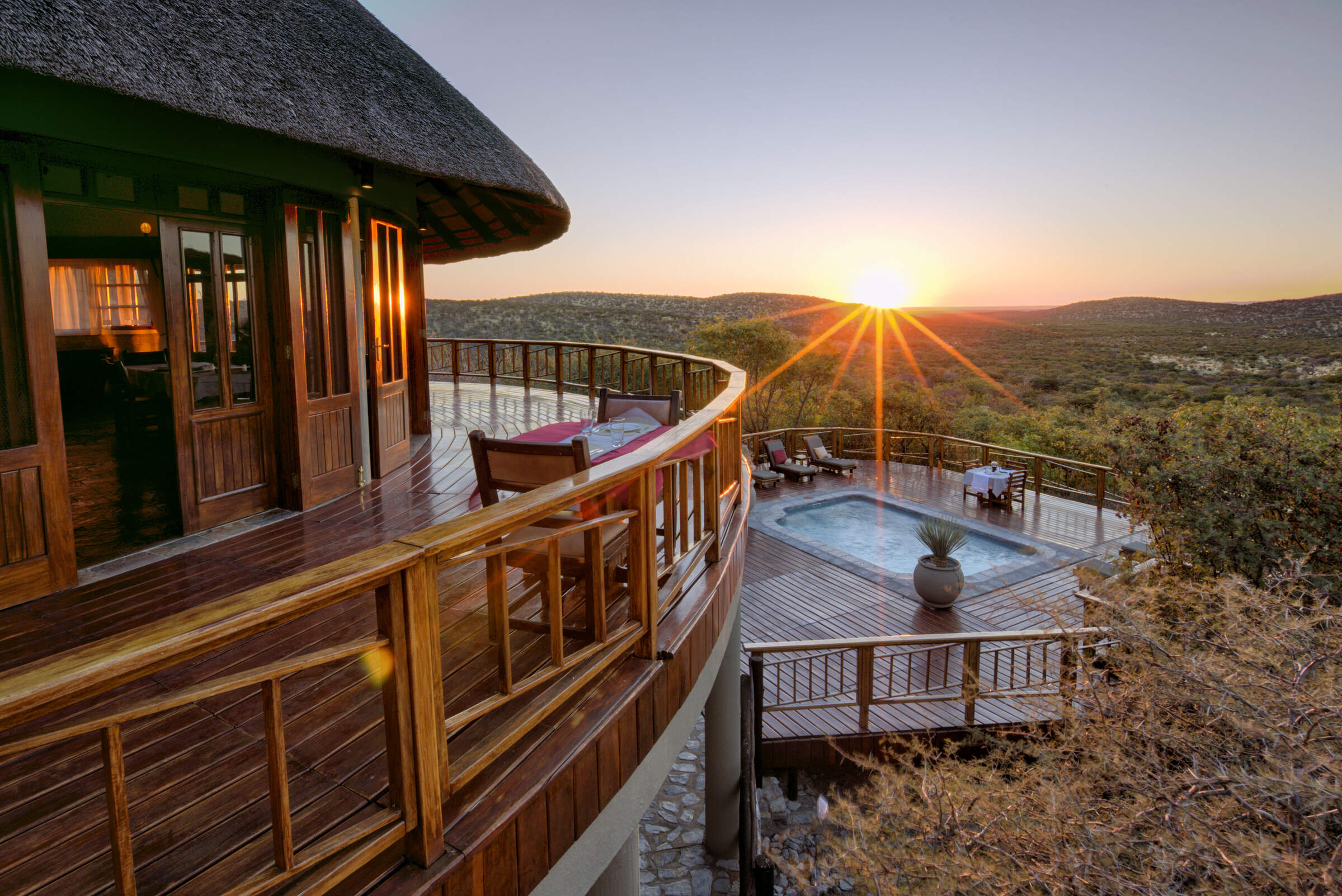
Mountain Lodge
In the heart of the private Etosha Heights Reserve, the family-friendly Mountain Lodge offers game drives and bush walks within an exclusive environment.
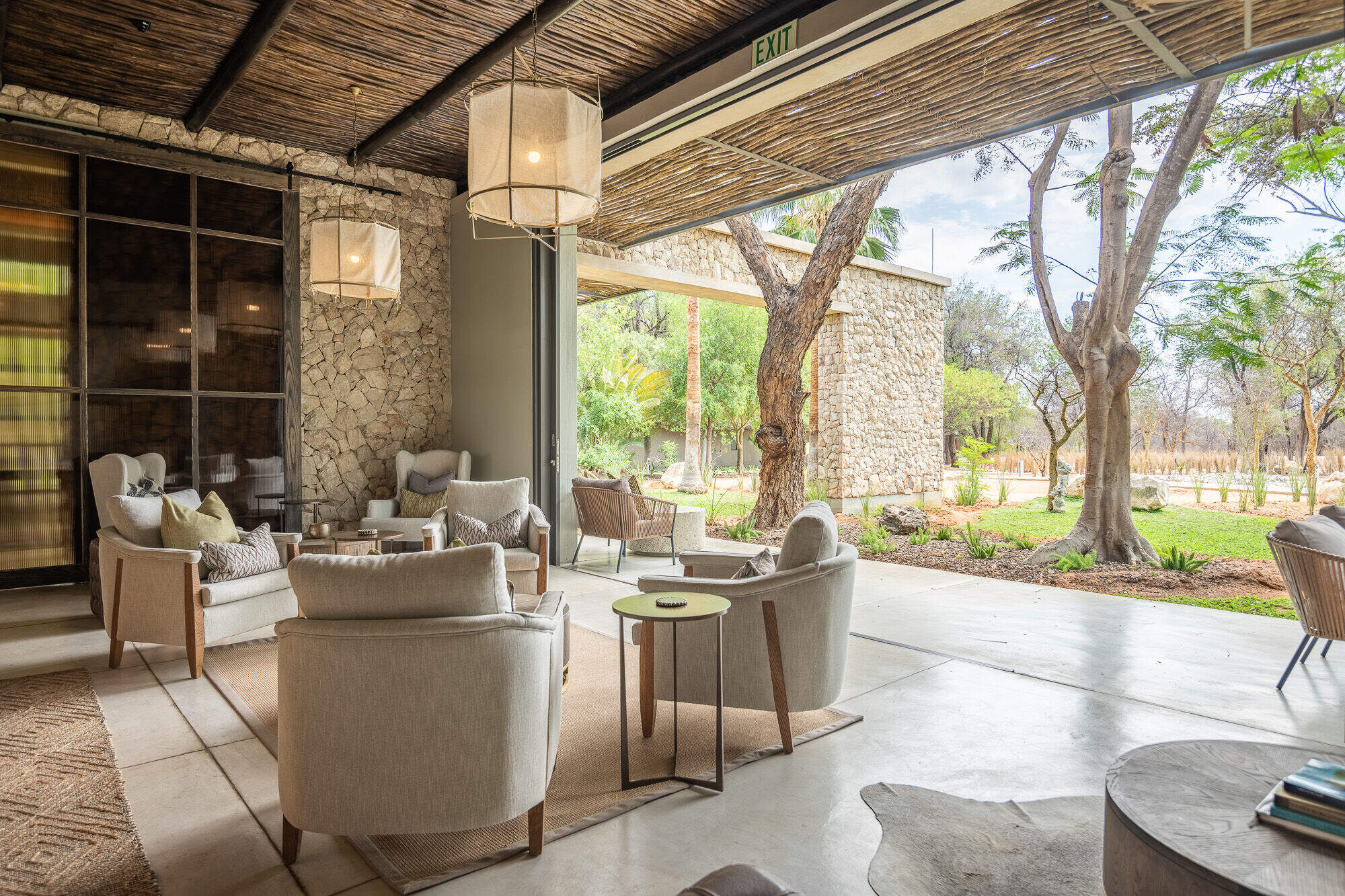
Mokuti Etosha Lodge
With 106 rooms, child-friendly Mokuti Etosha Lodge is more like a hotel than a lodge. Facilities to include a gym, spa, tennis courts and even a snake park.
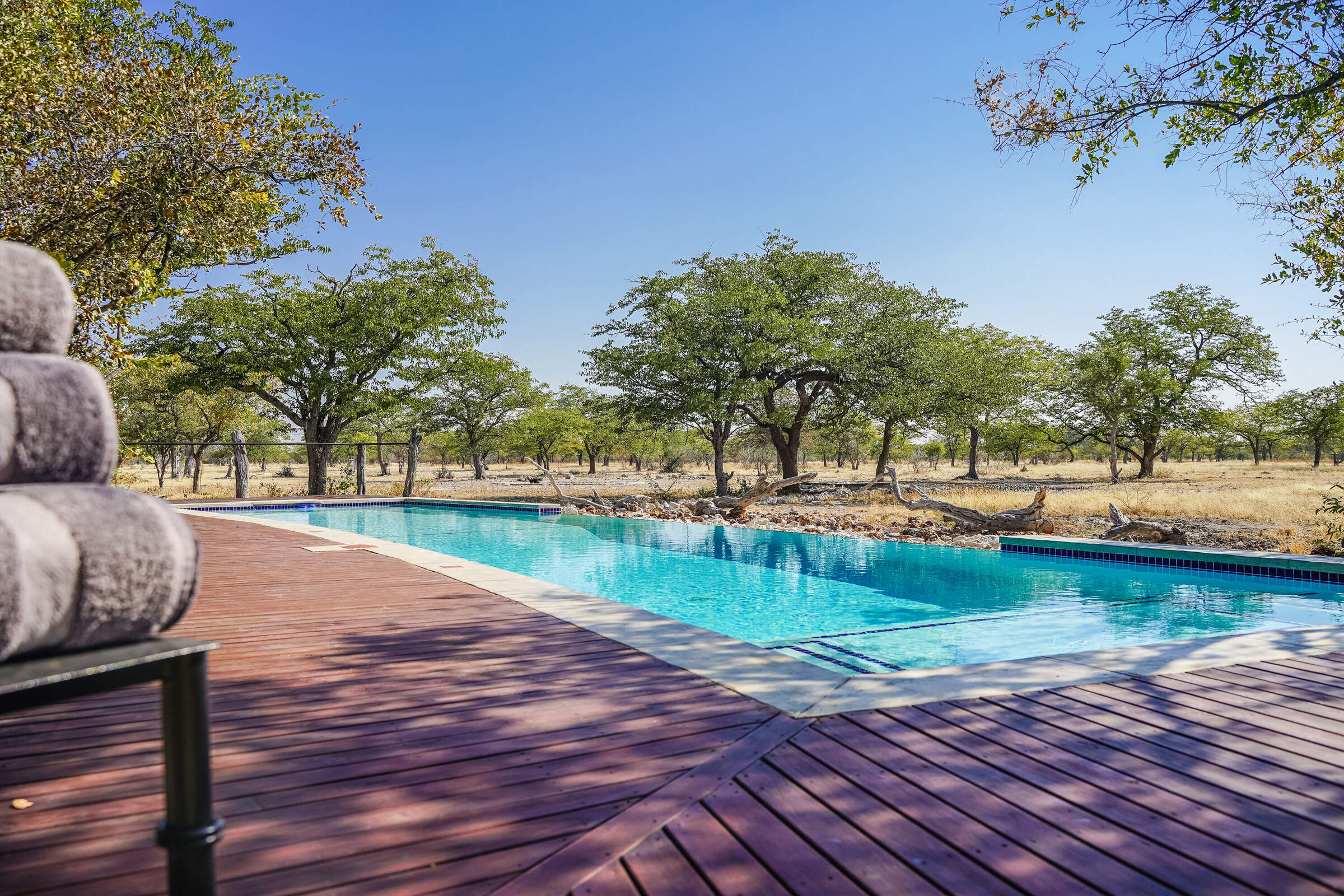
Etosha Oberland Lodge
A short drive from Etosha National Park's southern entrance, Etosha Oberland Lodge is a very comfortable base from which to explore the park, with excellent food.
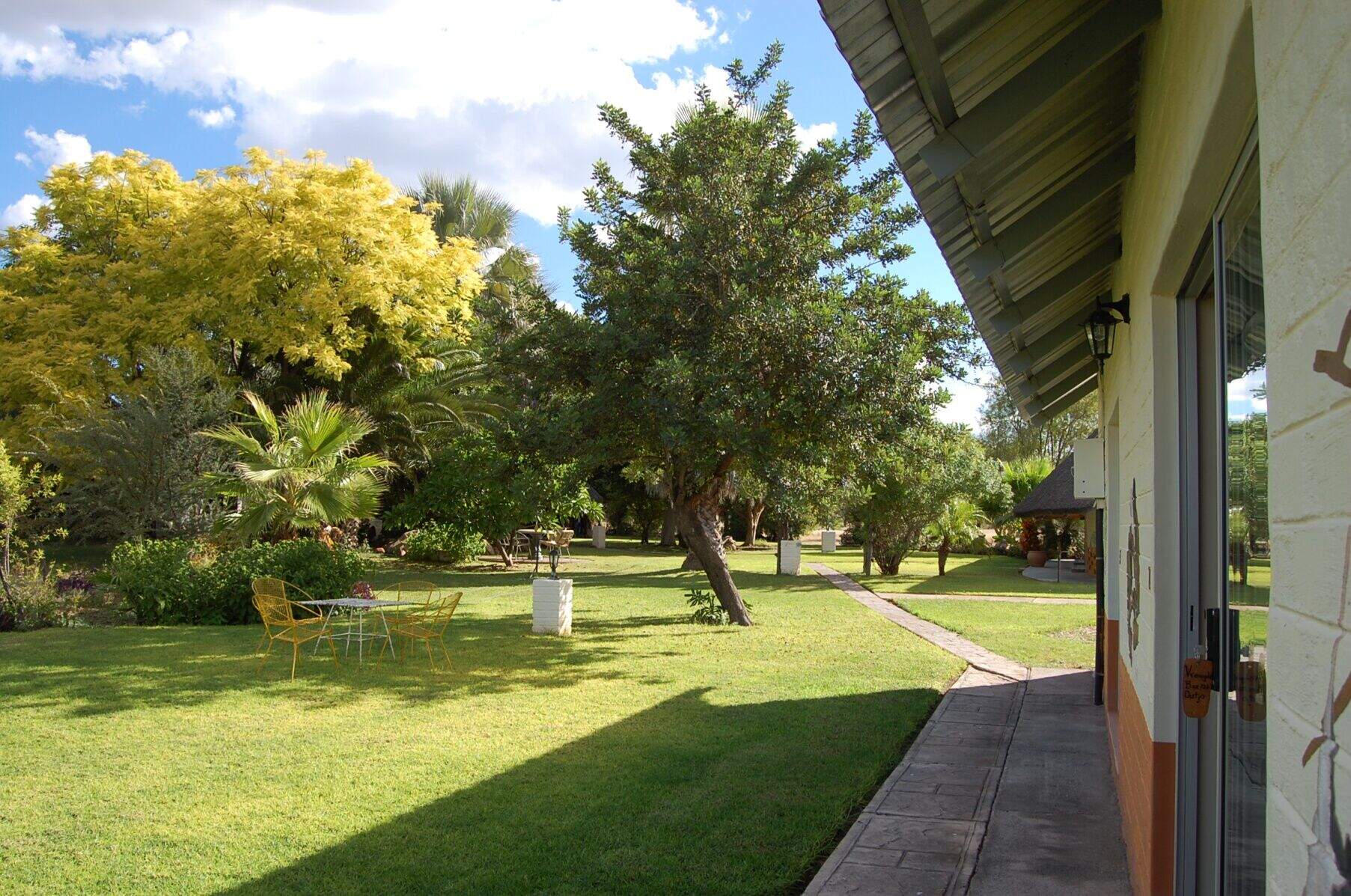
Vreugde Guest Farm
Vreugde Guest Farm is a delightful owner-run and working sheep farm where you can expect a warm welcome and charming hospitality.
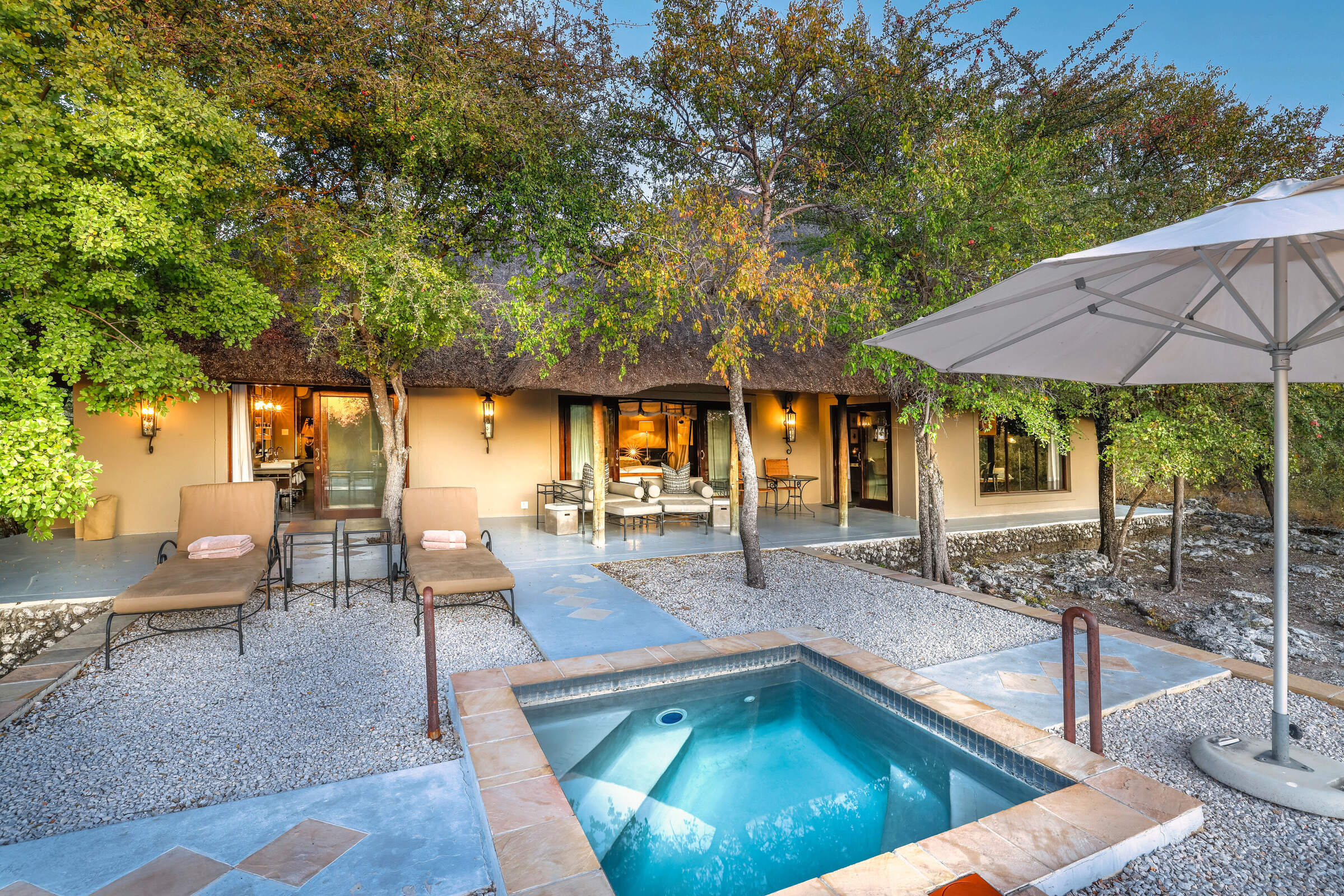
Villa Mushara
Offering luxury on a peaceful private reserve close to Etosha, Villa Mushara is a great choice for honeymooners & those wishing to indulge themselves.
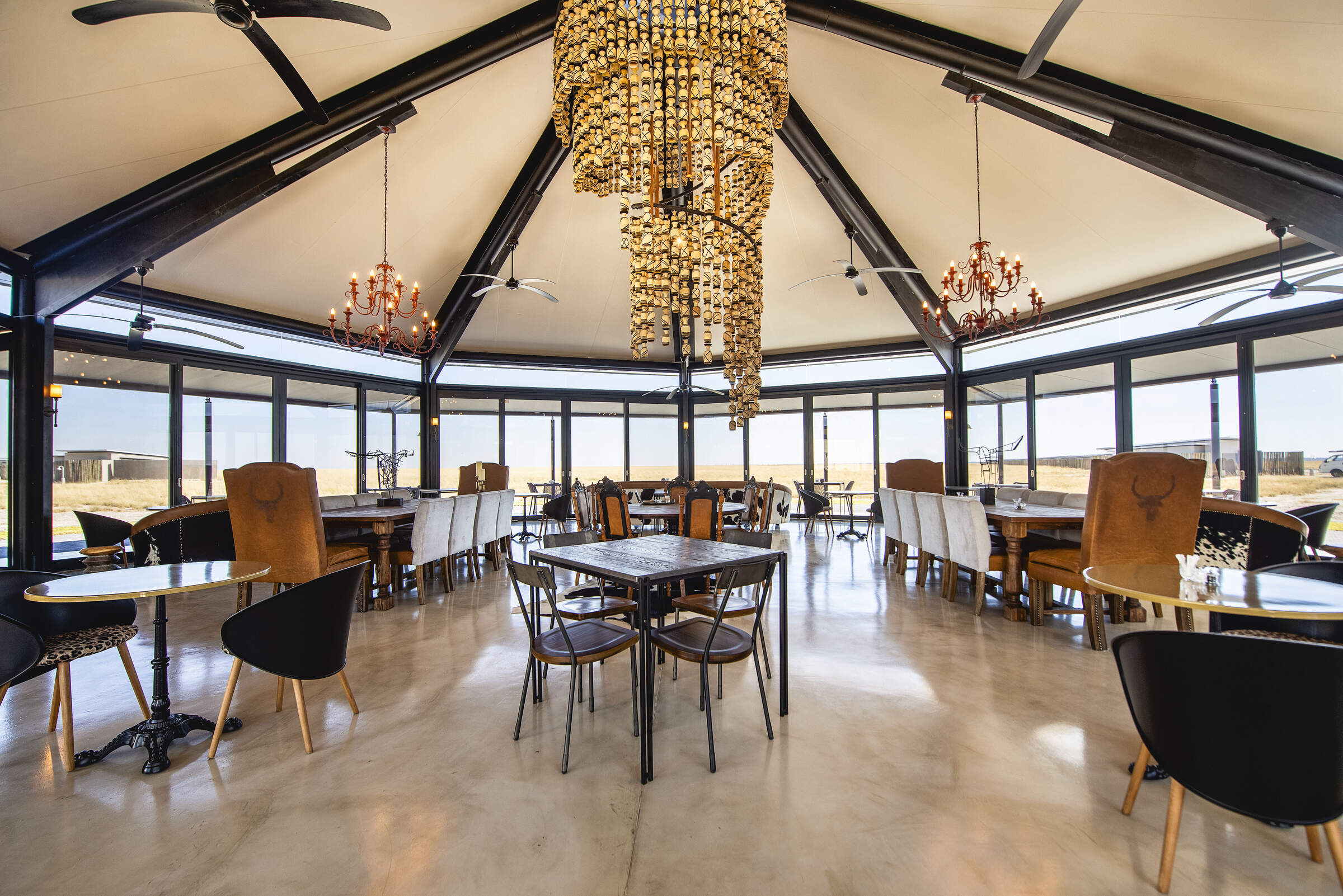
Etosha King Nehale
A short drive from the national park's northern entrance, Etosha King Nehale Lodge is an interesting and comfortable base from which to explore the park.
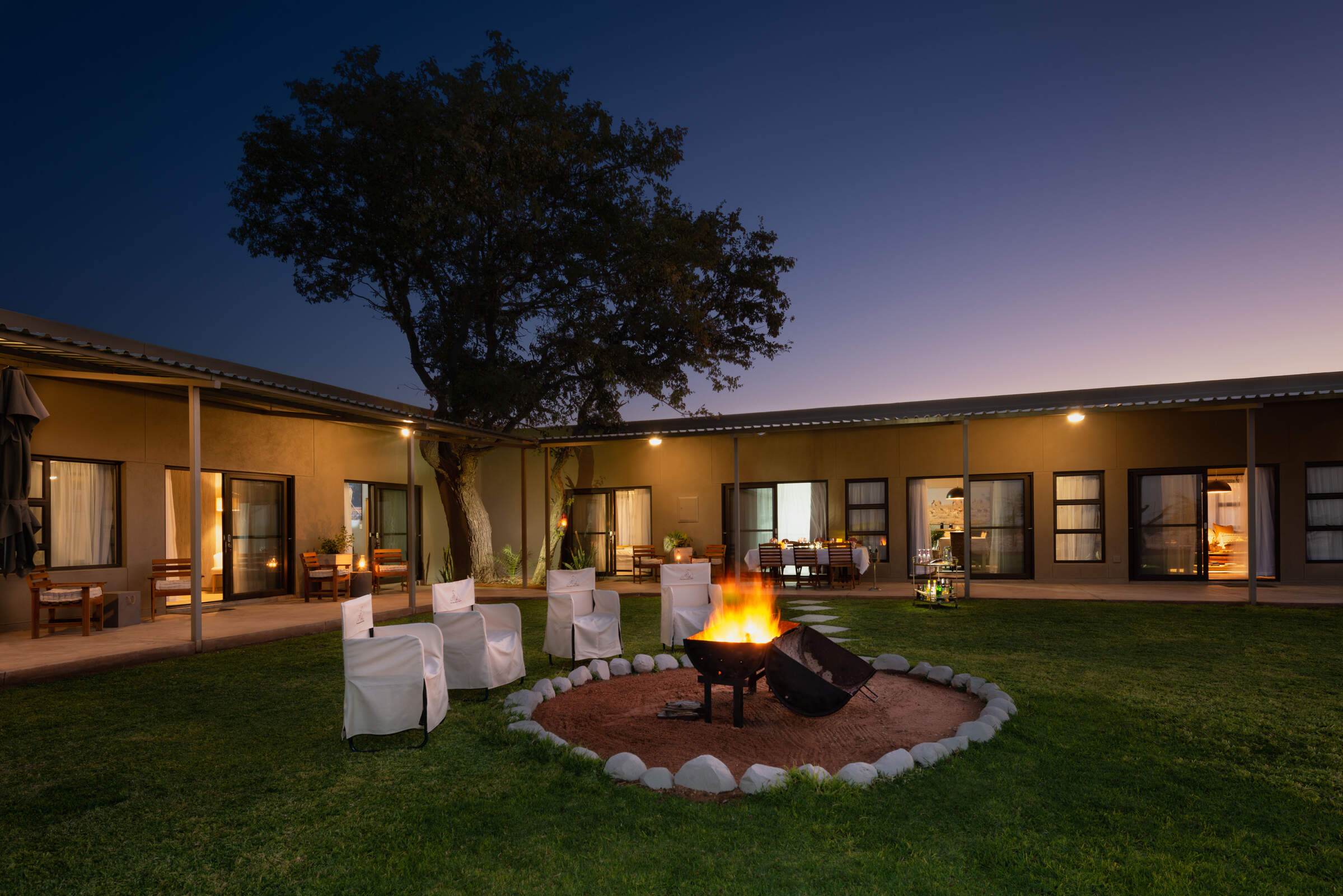
Safari House
The private Safari House on the Etosha Heights reserve is a great option families or friends travelling together.
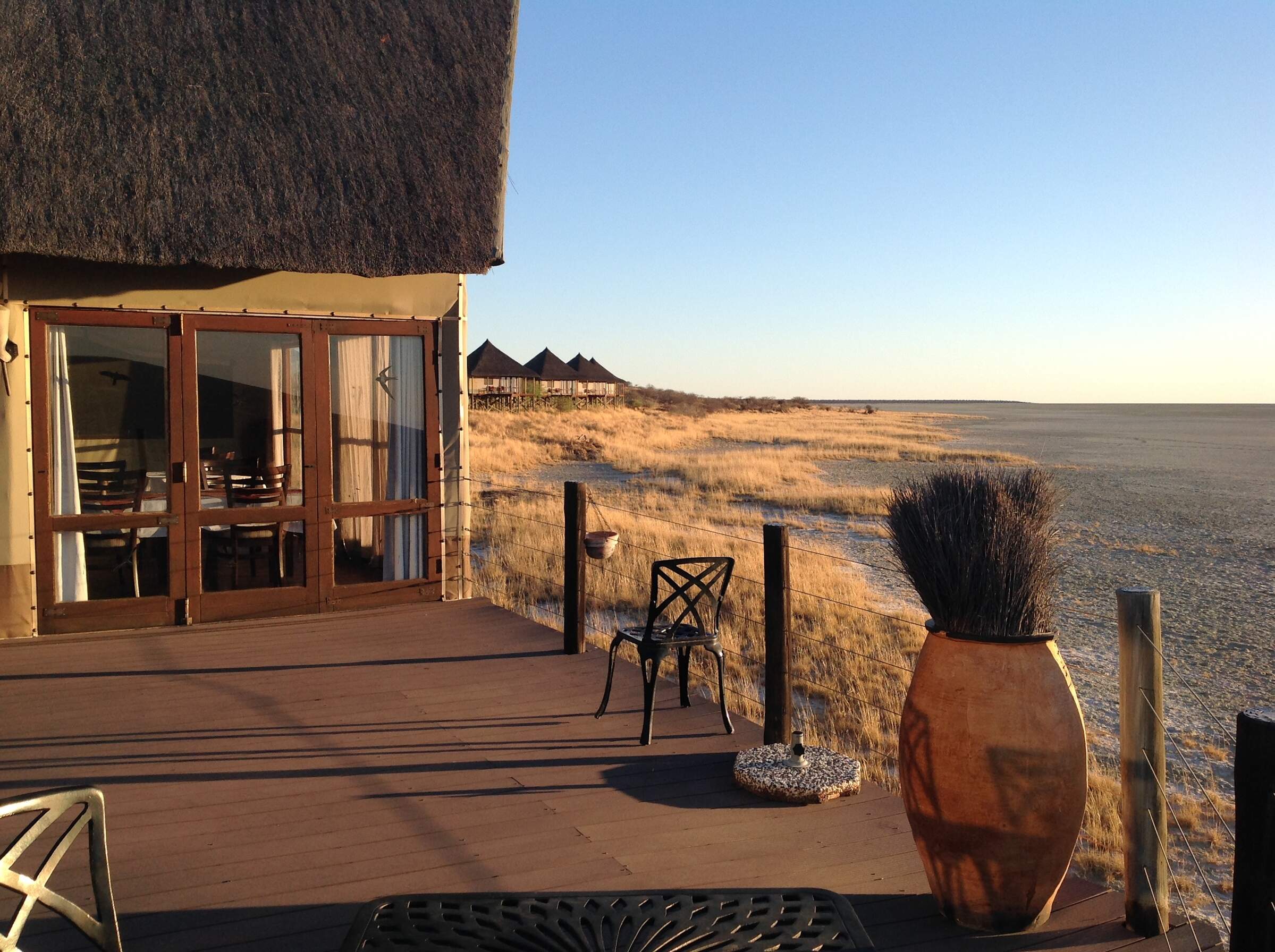
Onkoshi Camp
Onkoshi Camp is owned and run by Namibia Wildlife Resorts. Built on elevated wooden platforms it overlooks Etosha Pan.
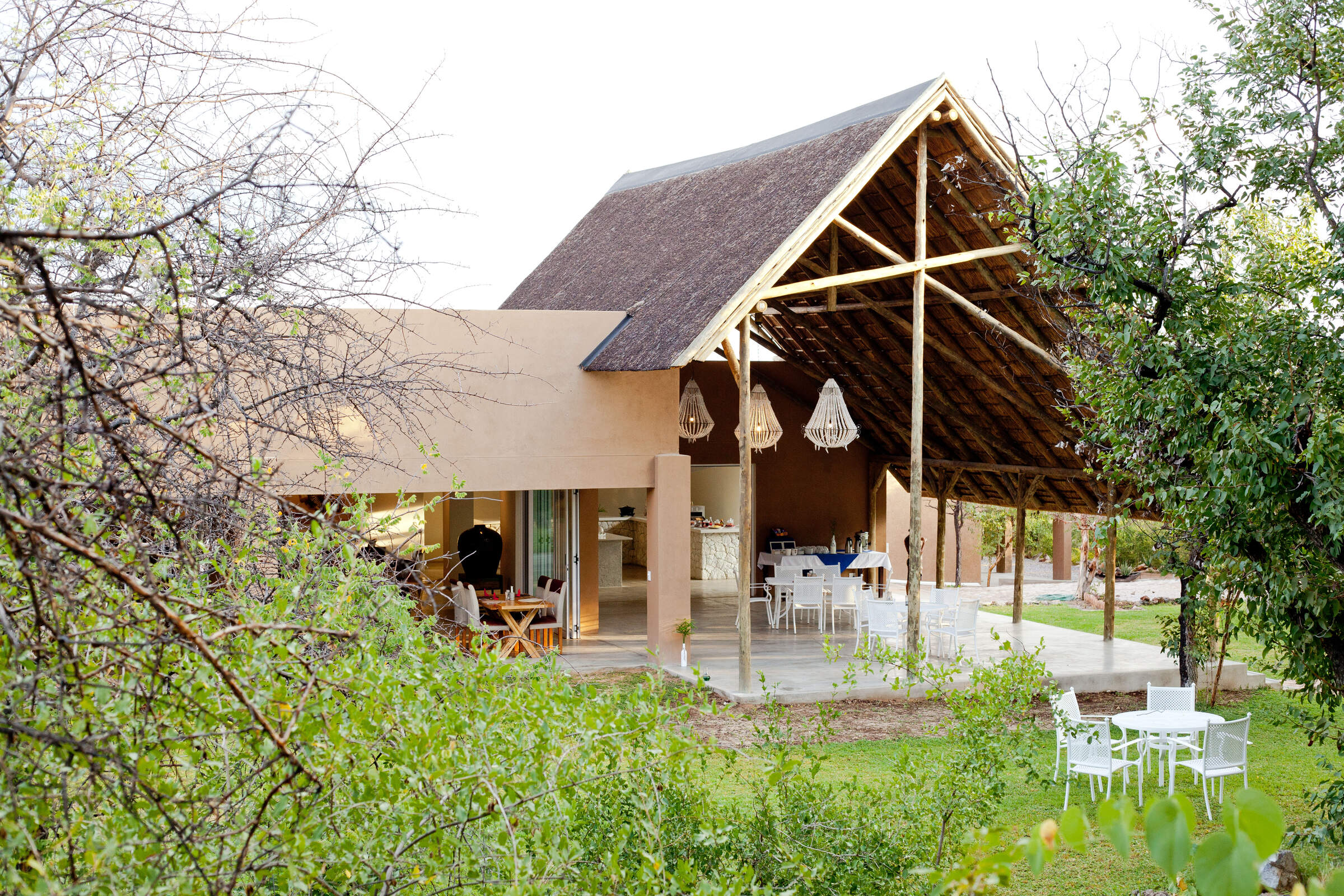
Toshari Lodge
Smart and professionally run, the hotel-style Toshari Lodge is well-placed for self-driving in Etosha National Park.
When to go to Etosha National Park
Our month by month guide: What it's like to visit Onguma Forest Camp in Etosha National Park
Jan
Feb
Mar
Apr
May
Jun
Jul
Aug
Sep
Oct
Nov
Dec
Etosha National Park in January
January marks the start of Etosha's main rainy season. The Etosha Pan, usually a vast expanse of white clay, may partially fill with water in good rainy season, attracting flamingos and other migratory birds. The landscape transforms into a lush green oasis, providing ample food for wildlife. Many animals give birth during this time, offering chances to see newborns.
While game viewing can be challenging due to dispersed wildlife and thick vegetation, birdwatching is excellent. Migratory species arrive and birds display breeding plumage. The Okaukuejo and Halali waterholes remain active, though less crowded than in dry months. Visitors should be prepared for occasional thunderstorms and potentially muddy roads, especially around Fischer's Pan.
The vibrant greenery and the presence of young animals make this a fantastic time for photography.
- Variable weather: hot, dry or humid with rain
- Occasional localised thunderstorms in Etosha
- Many animals with young; spectacular birdlife
- Wildlife dispersed, harder to see in Etosha
- Fewer tourists; low rates at most lodges
Our view
This is not a great time to visit
Weather in January
Etosha National Park in February
February is typically Etosha's wettest month. The Etosha Pan may be partially filled, creating a spectacular sight and attracting numerous waterbirds, including flamingos. The landscape is vibrantly green, with many animals raising their young.
While game viewing can be more challenging due to the abundance of water and vegetation, patient observers can spot a variety of wildlife, and share their sightings with fewer other visitors. Birdwatching is excellent, with many species in breeding plumage. The Fairy Tale Forest near Okaukuejo is particularly lush during this time.
Visitors should be prepared for occasional thunderstorms and potentially challenging road conditions, especially in the eastern part of the park. The lush environment and the presence of young animals provide a unique opportunity to witness the park's life cycle.
- Variable weather with occasional thunderstorms
- Bush feels alive; birdlife at its peak in Etosha
- Wildlife in Etosha dispersed, harder to spot
- A variety of newborn and young wildlife to see
- Few tourists; lowest rates for accommodations
Our view
This is not a great time to visit
Weather in February
Etosha National Park in March
As Etosha's main rains taper off, March offers a mix of wet and dry days. The landscape remains green and alive, with insects and smaller animals more easily seen, and many birds and animals are finishing raising their young.
The Etosha Pan may still hold some water, attracting flamingos and other waterbirds. Game viewing improves as the month progresses and animals start to herd together at permanent water sources. The Okaukuejo, Halali, and Namutoni waterholes become increasingly active.
Birdwatching remains excellent, with many migrant species still around. The Dolomite Camp area in the west offers good chances to spot rarer antelope species like black-faced impala.
The transition from wet to dry conditions provides a fascinating glimpse into the park's seasonal changes.
- Weather variable; thunderstorms less frequent
- Animals well-fed after months of abundance
- Wildlife in Etosha still dispersed, harder to see
- Migrant birds prepare to leave the park
- Few visitors; rates often low at Etosha lodges
Our view
A good time to visit, with pros & cons
Weather in March
Etosha National Park in April
April typically sees dry weather dominating in Etosha, with decreasing chances of rain. The landscape remains relatively green, and animals are in excellent condition with shiny coats. Increasing numbers of elephants seen as the herds begin to use the permanent water sources. The Okaukuejo waterhole becomes particularly active, especially in the evenings.
Photographers benefit from clear air and lush, green backdrop. Night drives from camps like Halali offer chances to see nocturnal animals. Birdwatching remains good, though some migratory species begin to depart, and the Fischer's Pan area can still be productive for waterbirds if there's residual water from the rainy season.
The shift towards drier conditions improves the chances of wildlife sightings.
- Becoming drier and cooler, especially at night
- Few visitors except around Easter; low rates
- Wildlife in Etosha still relatively spread out
- Migrant birds have largely left the park
- Fresh air and often green landscapes in Etosha
Our view
A good time to visit, with pros & cons
Weather in April
Etosha National Park in May
May marks the transition to Etosha's dry season. The landscape starts to dry out, but may still retain some greenery. Wildlife increasingly gathers around permanent water sources, making game viewing more predictable. The Okaukuejo, Halali, and Namutoni waterholes become excellent spots for animal observation – especially when floodlit after dark. Night drives offer opportunities to see nocturnal species like leopards and owls.
The Etosha Pan is usually dry, creating a stark, shimmering backdrop for photography. Birdwatching remains good, with 340 different species recorded in the park. The western part of the park, accessible from Dolomite Camp, offers chances to see rarer species like black rhino in a less frequently explored environment. The dry season's onset brings a new rhythm to the park's wildlife dynamics.
- Lovely weather: dry, warm days & cool nights
- Etosha drying out; landscapes still partly green
- Fantastic air clarity; ideal for photography
- Visitor numbers low; lodge rates still low
- Wildlife starting to gather at Etosha waterholes
Our view
A very good time to visit
Weather in May
Etosha National Park in June
June brings cooler temperatures with clear skies to Etosha. The landscape is drying out, encouraging animals like elephants, rhino and giraffe to waterholes. This makes for excellent game viewing, especially at popular spots like Okaukuejo and Halali. Night drives on private Etosha reserves, like Ongava, are particularly productive.
The dry Etosha Pan creates mirages and a unique backdrop for photography, perhaps a lone ostrich crossing the stark salt crust. Birdwatching remains rewarding, with bright colours standing out in drier vegetation. The Namutoni area, with its fort, provides a mix of wildlife viewing and historical interest.
Cooler temperatures making walking safaris enjoyable in Etosha’s adjacent wildlife reserves, like Etosha Heights.
- Clear days, cold nights in Etosha National Park
- Great air quality; perfect for photographers
- Moderate lodge rates; shoulder season begins
- Wildlife gravitates to Etosha's waterholes
- Some greenery remains in parts of the park
Our view
A very good time to visit
Weather in June
Etosha National Park in July
July is prime time for wildlife viewing in Etosha as animals, in particular predators, are more active later in cool mornings and earlier in the afternoons. The dry landscape concentrates animals around waterholes, making for predictable and spectacular sightings. The Okaukuejo waterhole is particularly active, especially at night when black rhinos often visit and jostle for position with elephants.
The stark white Etosha Pan creates a unique backdrop for photography, with heat mirages shimmering on the horizon.
The dry season's peak offers unparalleled wildlife viewing opportunities. Game drives along the southern edge of the pan offer excellent opportunities to see large herds of zebra, wildebeest, and antelope. Birdwatching is rewarding around waterholes, with species like eagles and vultures frequently sighted.
- Dry days, crisp nights; excellent for stargazing
- European holidays begin; more families visit
- Peak season; high rates, lodges often full
- Fantastic wildlife watching
- Animals concentrate around Etosha waterholes
Our view
A very good time to visit
Weather in July
Etosha National Park in August
August is the height of the dry season in Etosha, offering excellent wildlife viewing opportunities. Animals concentrate around waterholes, with a variety of predators and prey often seen at any one time. Night viewing at the more secluded yet floodlit waterhole at Halali is often rewarded with sightings of shyer leopard and porcupine.
The dry season's intensity brings wildlife into sharp focus. The open plains along the edge of the Etosha Pan are good for seeing large herds of zebra and wildebeest, and often cheetah too. Predators often lie in wait for their prey near waterholes offering sightings of hunts to patient game viewers.
Birdwatching remains rewarding, with raptors like bateleur and martial eagles frequently sighted.
- Dry days, cold nights; clear skies in Etosha
- Busy by Namibian standards; family rooms full
- Peak season; high rates, advanced booking needed
- Excellent wildlife viewing in Etosha National Park
- Large herds gather at Etosha's waterholes
Our view
Fantastic: the very best time to visit
Weather in August
Etosha National Park in September
September offers peak wildlife viewing in Etosha. The extreme dry conditions concentrate animals around waterholes, making for spectacular sightings of multiple species. The Okaukuejo waterhole is particularly active, with elephants, rhinos, and lions frequently visiting.
The last months of the dry season showcases the park's wildlife at its most concentrated. The stark landscape of the dry Etosha Pan creates dramatic backdrops for photography. Game drives along the pan's edge offer chances to see large herds of zebra, springbok, and oryx as well as lion prides and cheetah. The western part of the park, accessible from Dolomite Camp, often provides a more exclusive safari experience with good rhino sightings. Night drives on adjacent private reserves like Hobatere offer opportunities to see nocturnal animals such as genets and aardwolves.
Birdwatching is excellent, with species standing out clearly in the sparse vegetation.
- One of the best months for Etosha wildlife viewing
- Warm days, cold nights; temperatures rising
- Colourful birds stand out against a starker backdrop
- Etosha's waterholes teem with diverse wildlife
- High season; book Etosha accommodations early
Our view
Fantastic: the very best time to visit
Weather in September
Etosha National Park in October
October is typically Etosha's hottest and driest month, offering excellent wildlife viewing. The intense heat and dry conditions heighten the drama of wildlife interactions.
Animals concentrate heavily around waterholes, with spectacular sightings common at Okaukuejo, Halali, and other permanent water sources. Patient photographers spending time at waterholes are richly rewarded. Large herds of zebra, wildebeest, and various antelope species can be seen along the pan's southern edge. Predator sightings, including lions and cheetahs, are frequent as they target gathered and weakened prey. Thinning vegetation at Namutoni makes it easier to spot the dimunitive Damara dik dik – Namibia’s smallest antelope.
Birdwatching remains rewarding, with raptors and colourful rollers often spotted.
- Peak wildlife-viewing month in Etosha National Park
- Hot and dry; Etosha feels like a desert
- Air can be hazy with dust in some areas
- Peak time; expect high season rates in Etosha
- Etosha lodges often full, especially early October
Our view
A very good time to visit
Weather in October
Etosha National Park in November
November marks the transition to Etosha's rainy season, bringing change to the landscape and wildlife behaviour. Early rains may green the vegetation, dispersing some wildlife from waterholes. However, game viewing remains good, especially around permanent water sources like Okaukuejo and Halali’s floodlit waterholes.
The first rains can create dramatic scenes as animals celebrate the water's arrival, with plains game often giving birth. Predators often give birth at this time too, to coincide with the time of plenty. Migratory birds begin to return, and birds take to the skies in spectacular aerial shows as they catch more active insects.
Seasonal wildflowers and dramatic, thundery skies add interest to photographic compositions. Summer rains bring reptiles such as tortoises and chameleons out into the open. The onset of rains brings a refreshing change to the park's ecosystem.
- Variable month in Etosha, depending on rains
- If rain comes, explosion of vegetation and life
- Baby animals often born around mid-month
- Shoulder season; mid-range rates offer value
- Showers more likely later in the month in Etosha
Our view
A good time to visit, with pros & cons
Weather in November
Etosha National Park in December
December is often a drier month before January sees the main rainy season begin. The landscape begins to show green from November's rain and the odd rainshower in December. Many animals have young, so there’s the chance to watch frolicking calfs and lambs.
The combination of rainfall and sunshine rejuvenates the park's landscapes and wildlife. While wildlife disperses away from the waterholes with increased water availability, game viewing remains good, especially on the open plains along the southern edge of Etosha Pan. Birdwatching is excellent, with many species in breeding plumage and displaying for mates as well as migrant species arriving.
Visitors should be prepared for occasional thunderstorms and potentially muddy roads, especially in the eastern part of the park.
- Hot, sometimes humid with cooling showers
- Landscapes green where rain has fallen in Etosha
- New life and energy in the park's ecosystem
- Excellent for birdwatchers in Etosha
- Larger animals may be harder to spot
Our view
This is not a great time to visit
Weather in December

Looking for inspiration on where to travel next?
Visit our trip chooser to explore your options and find inspiration for your perfect African adventure
Inspire me